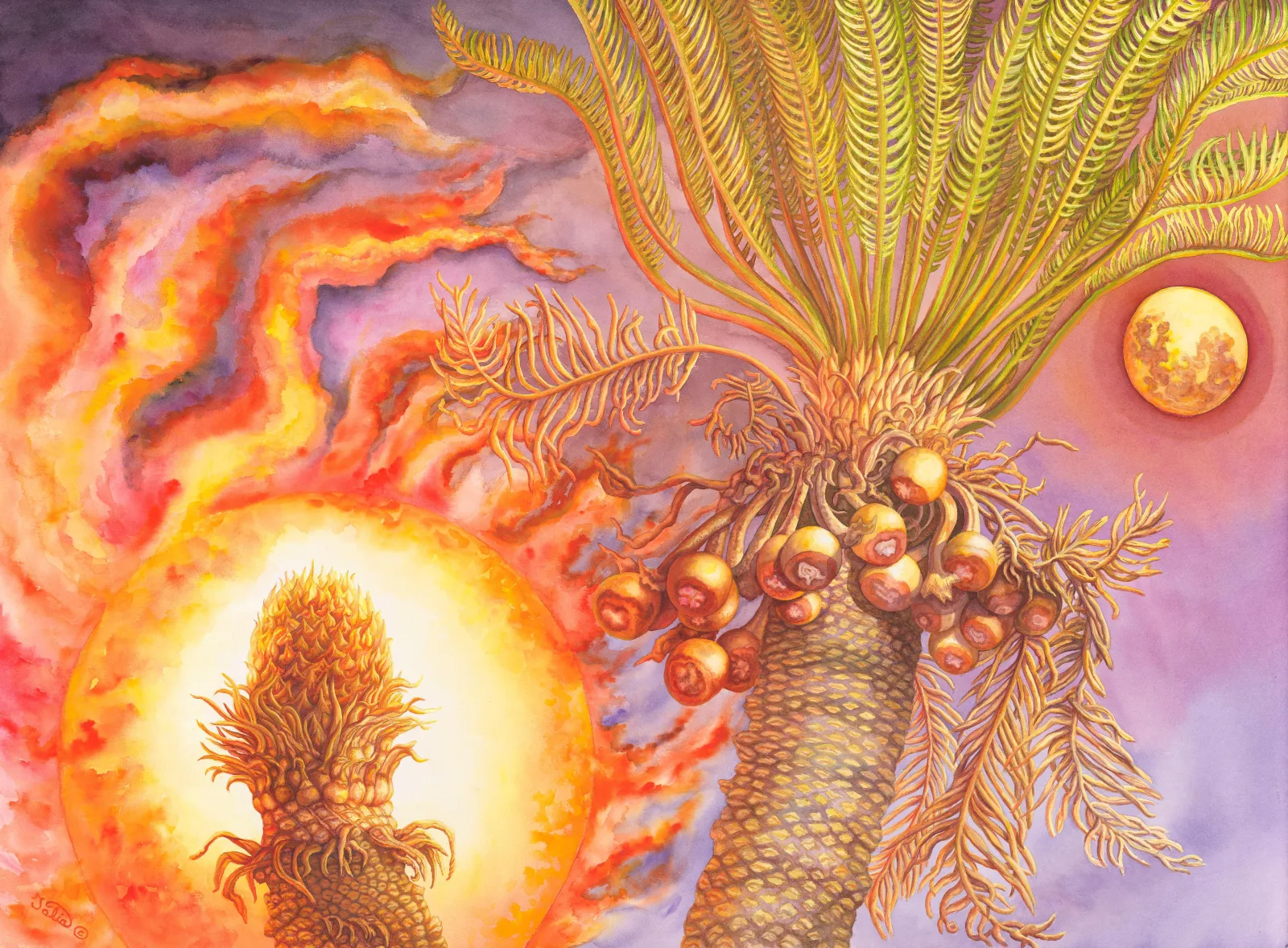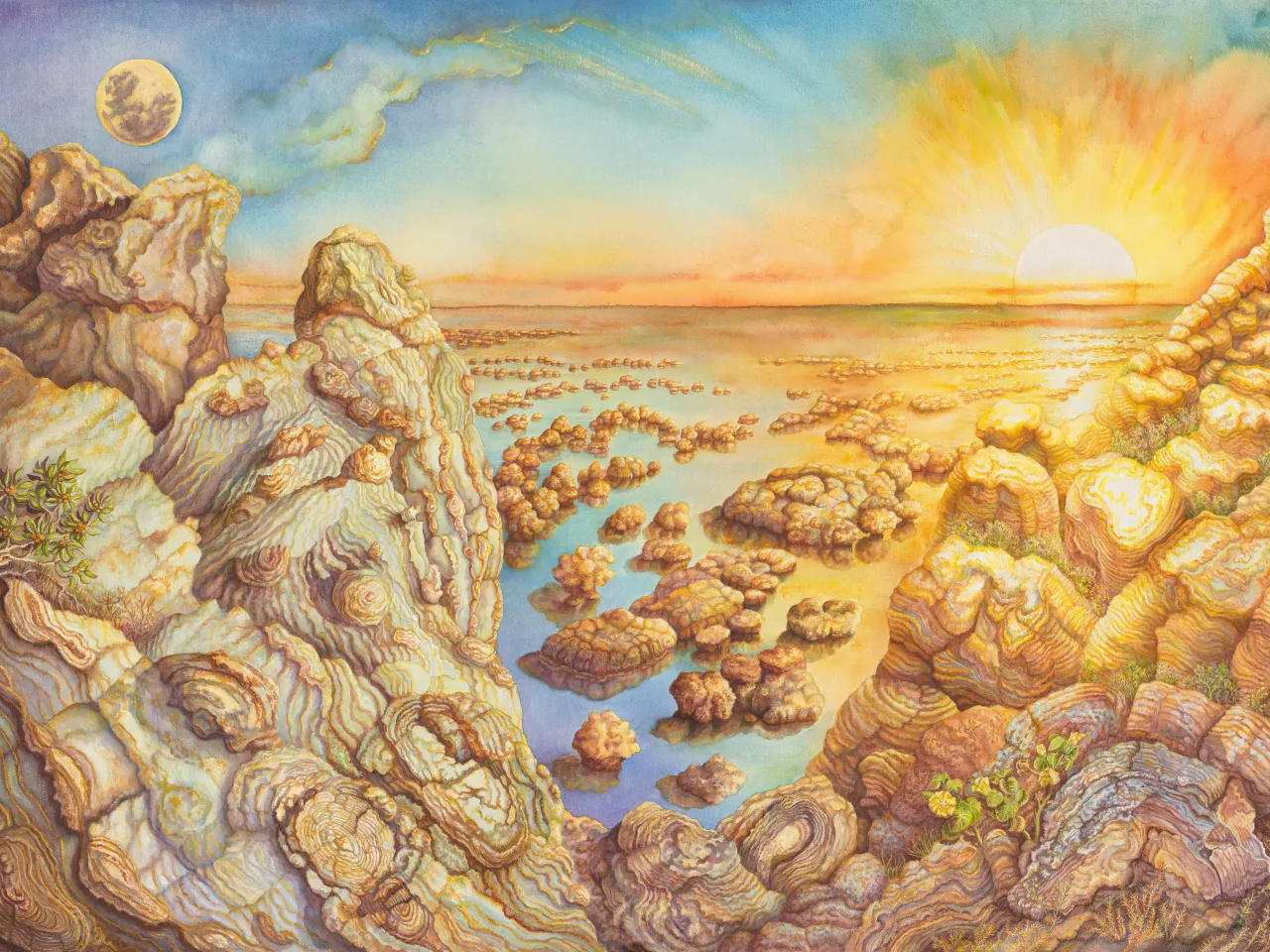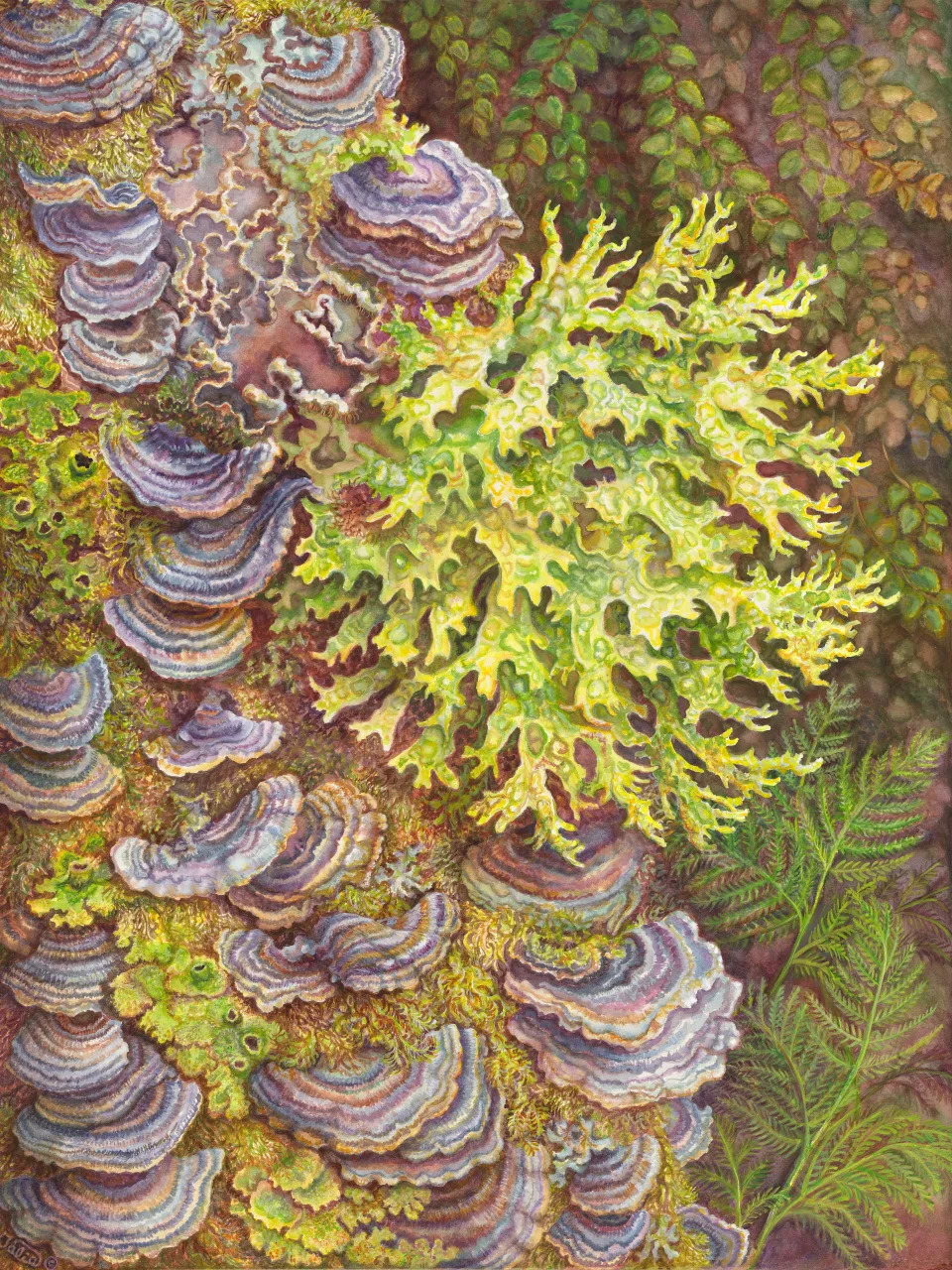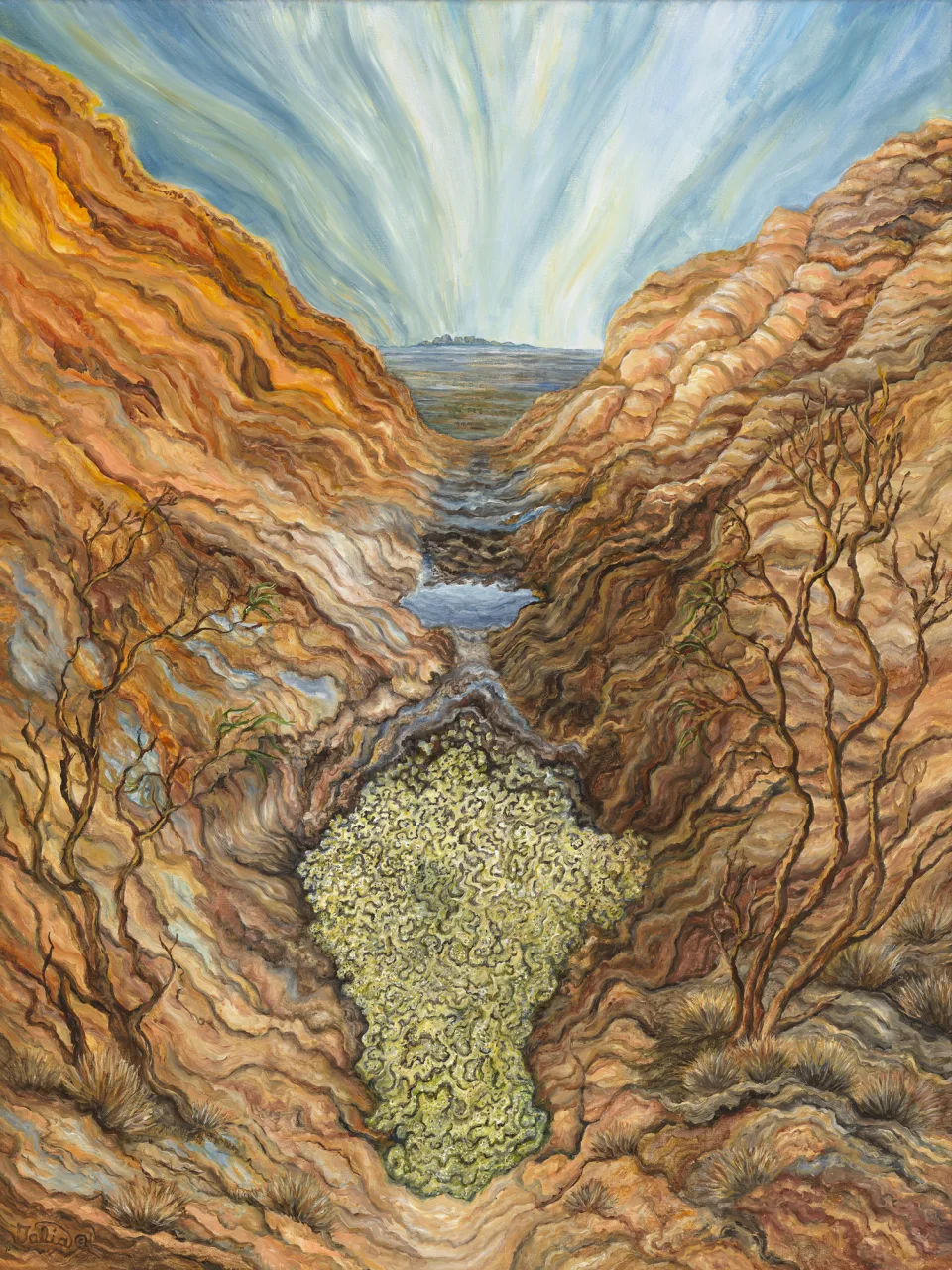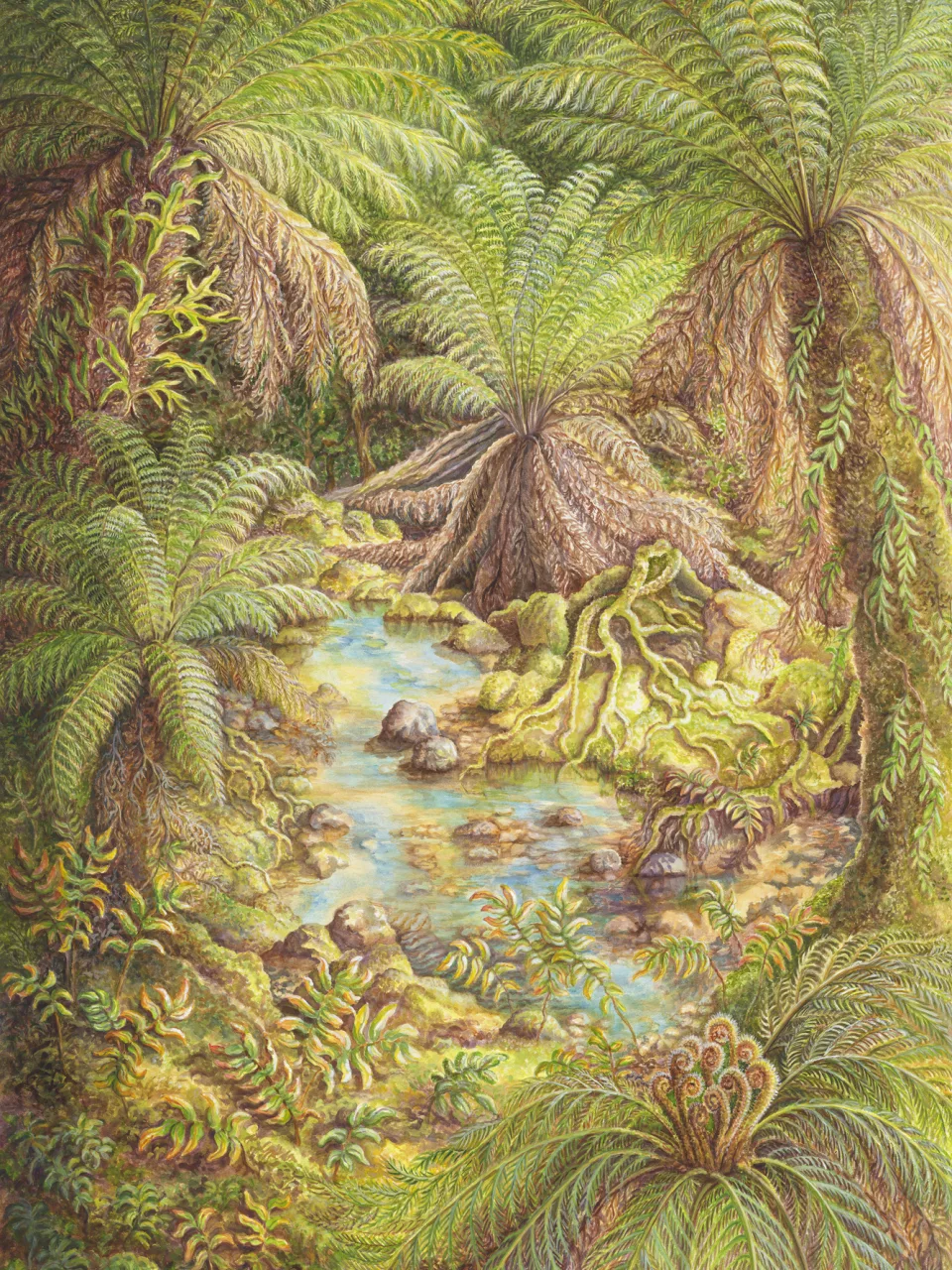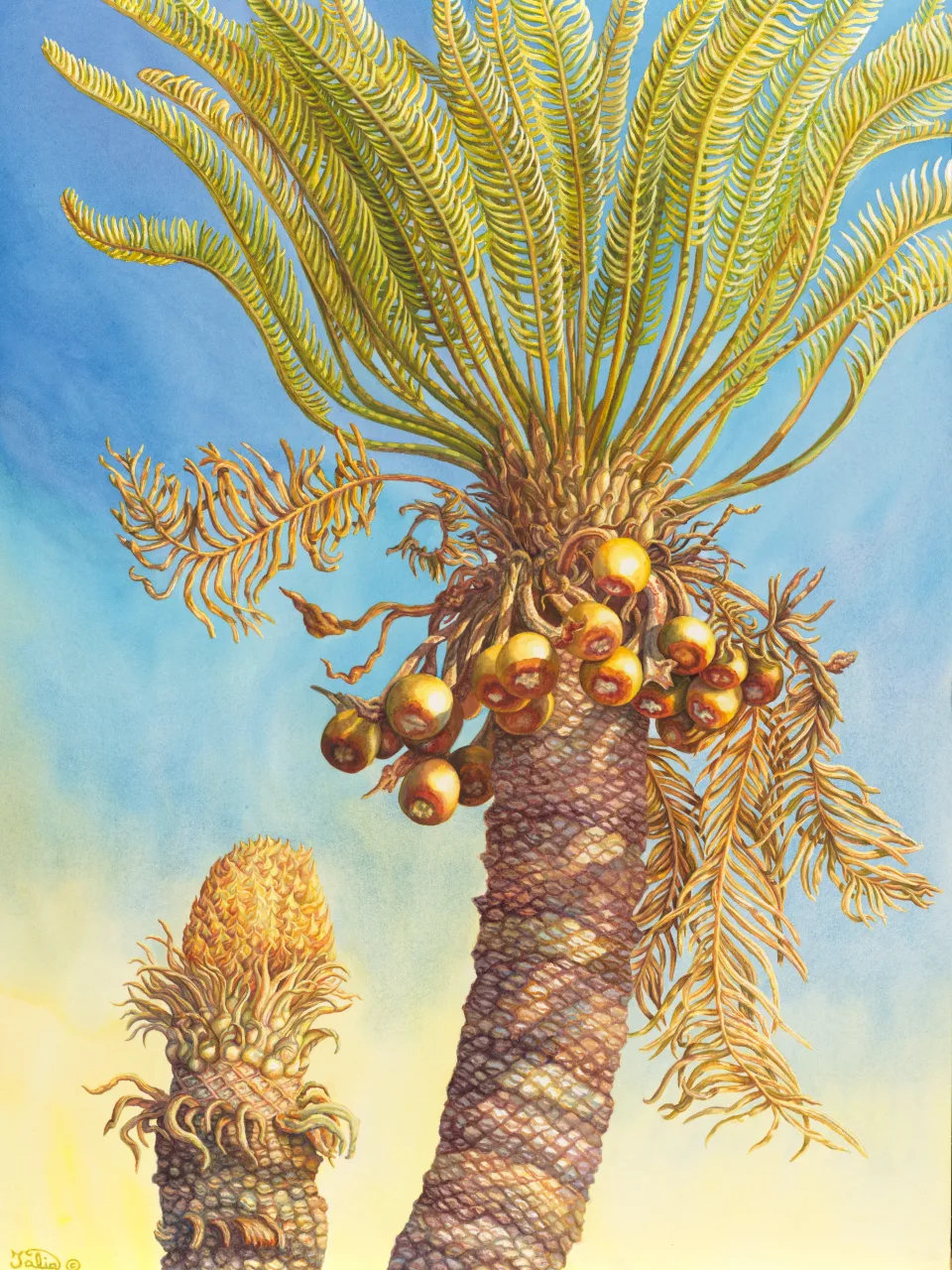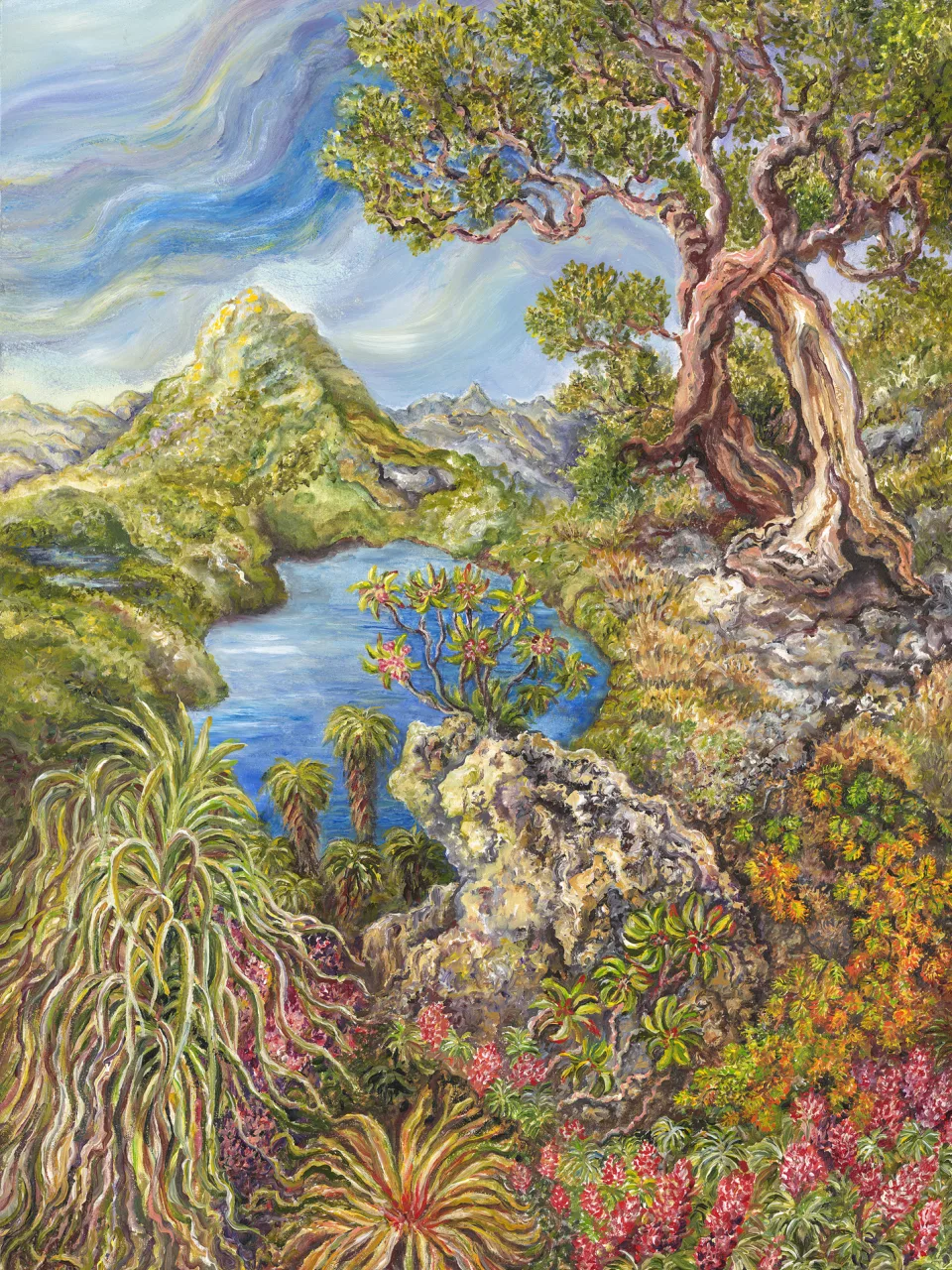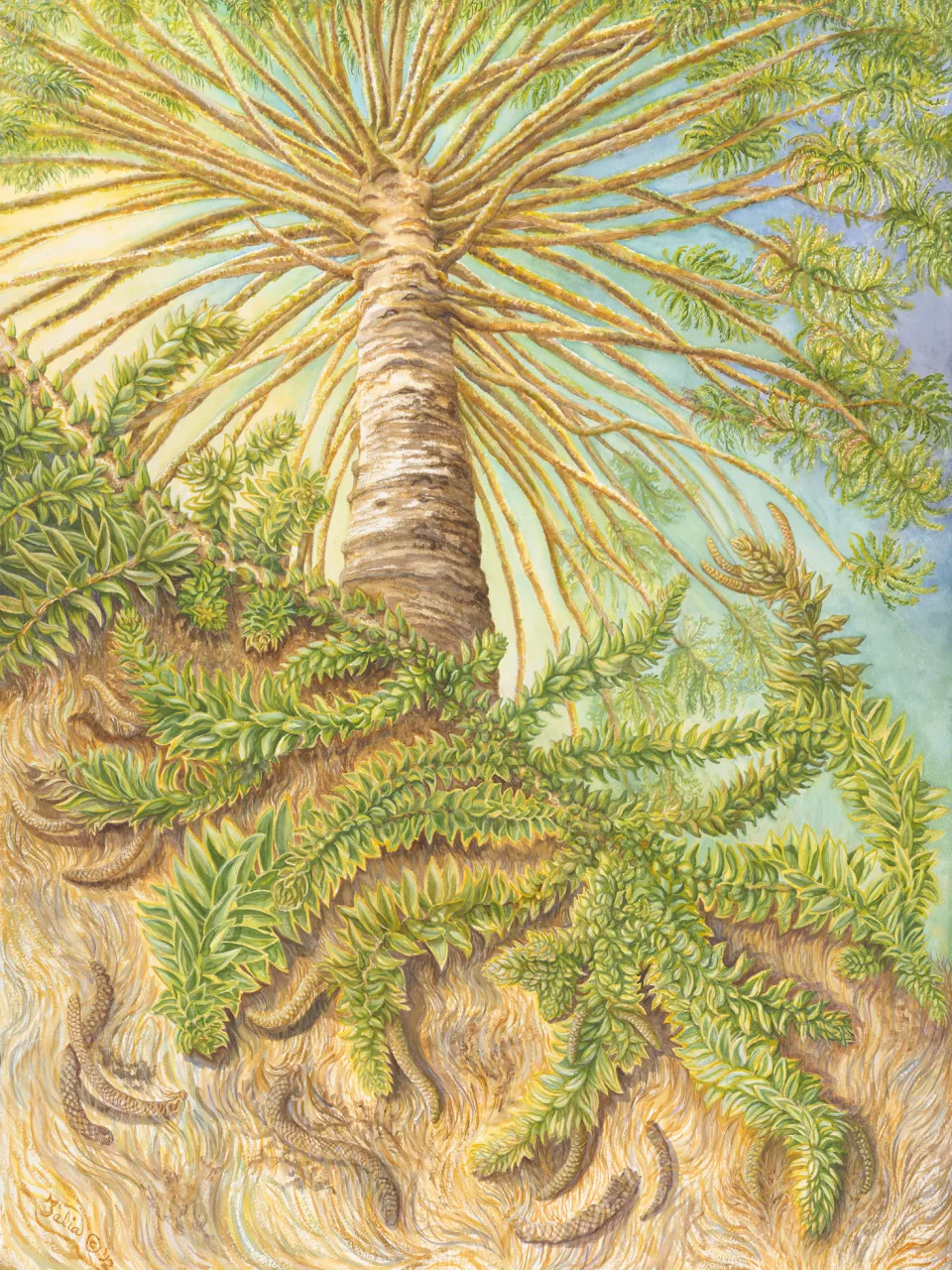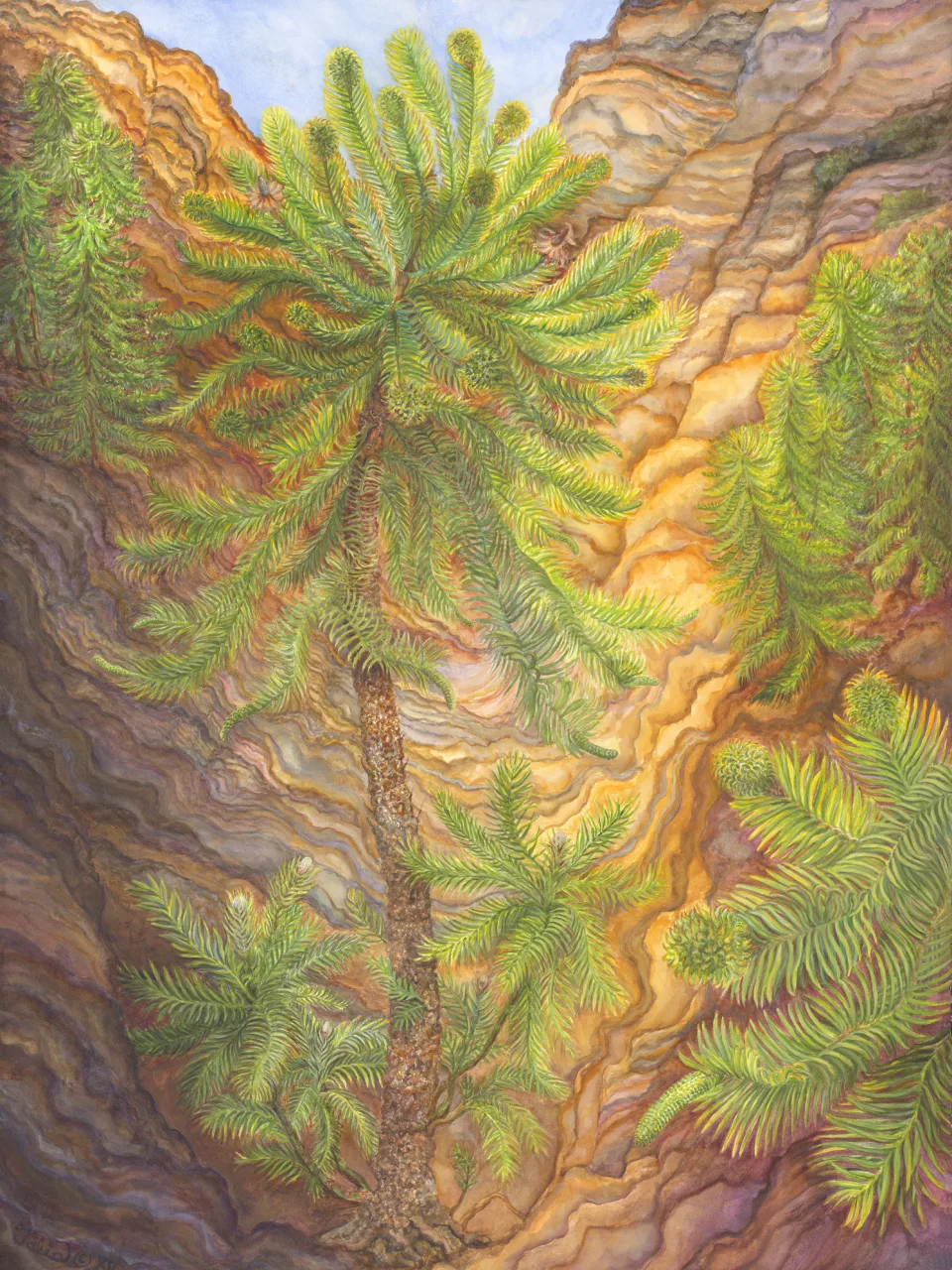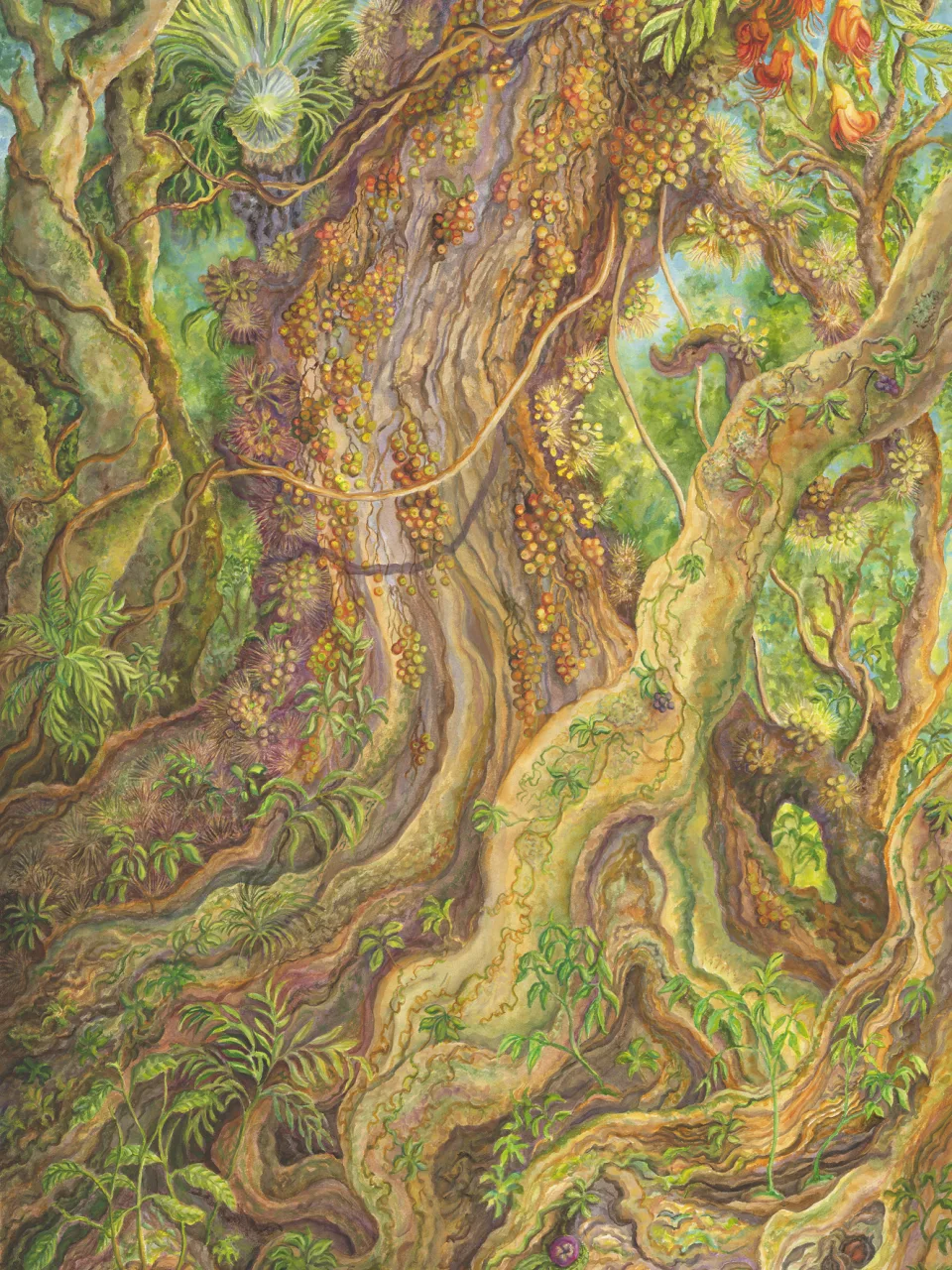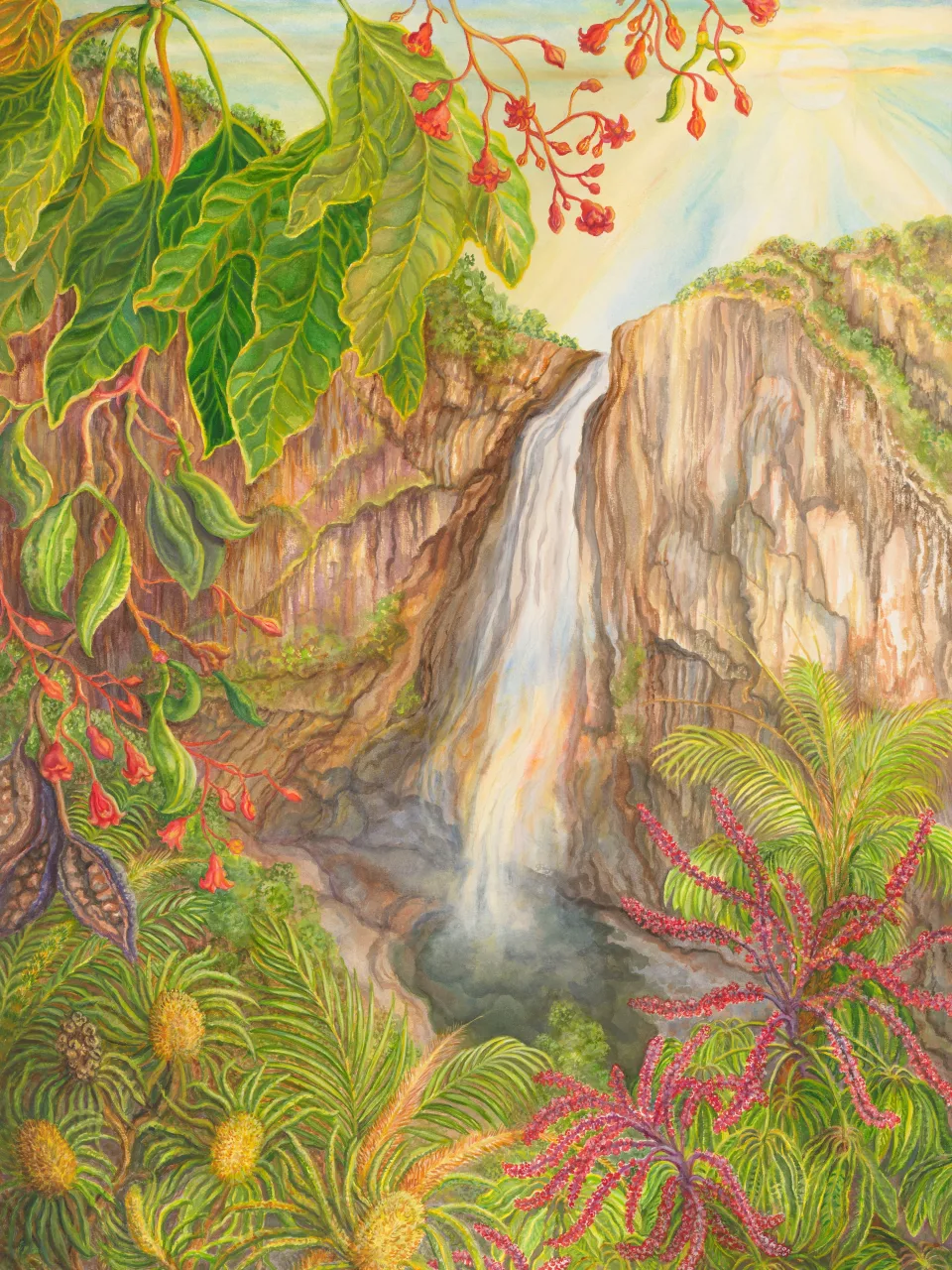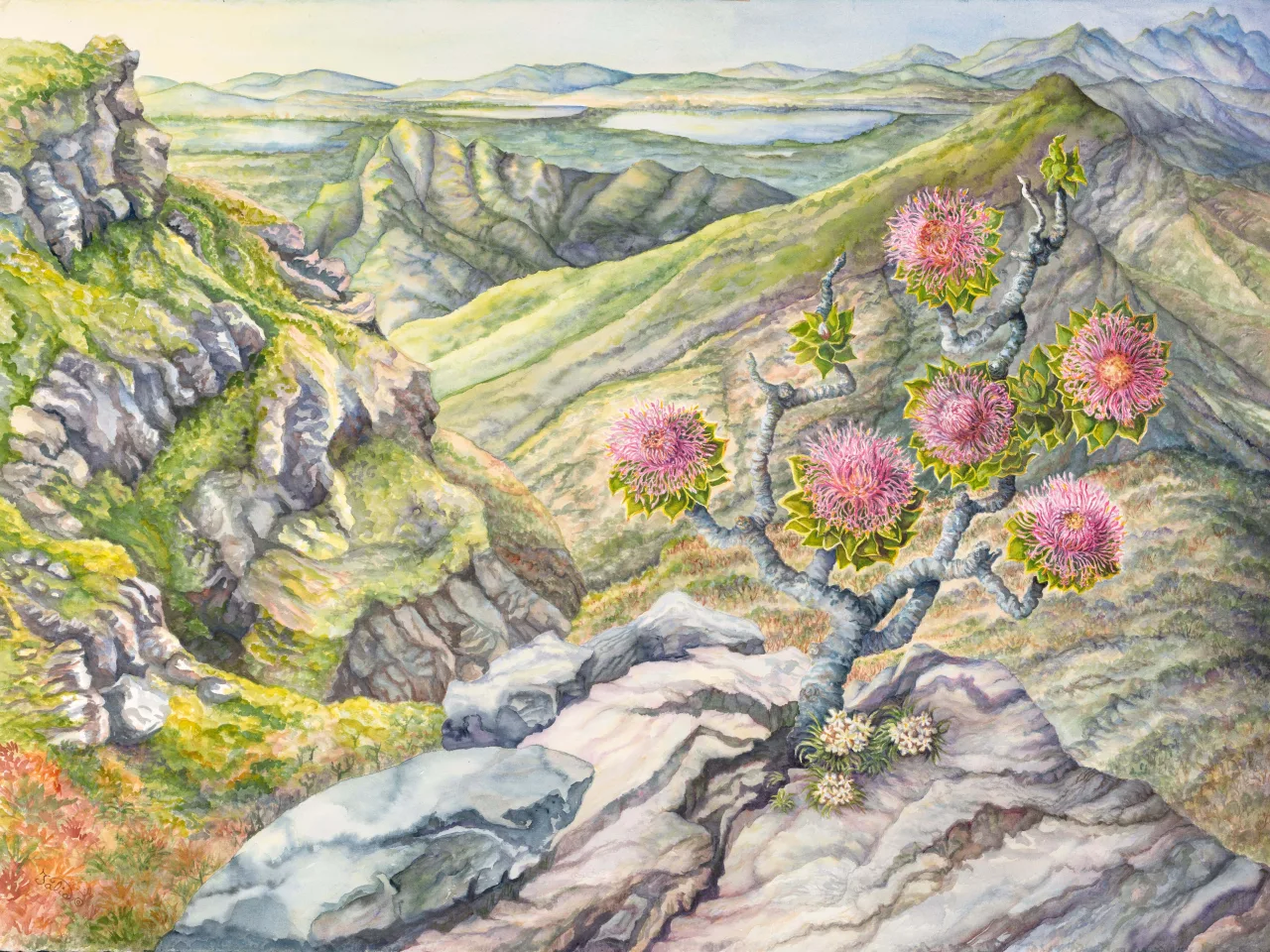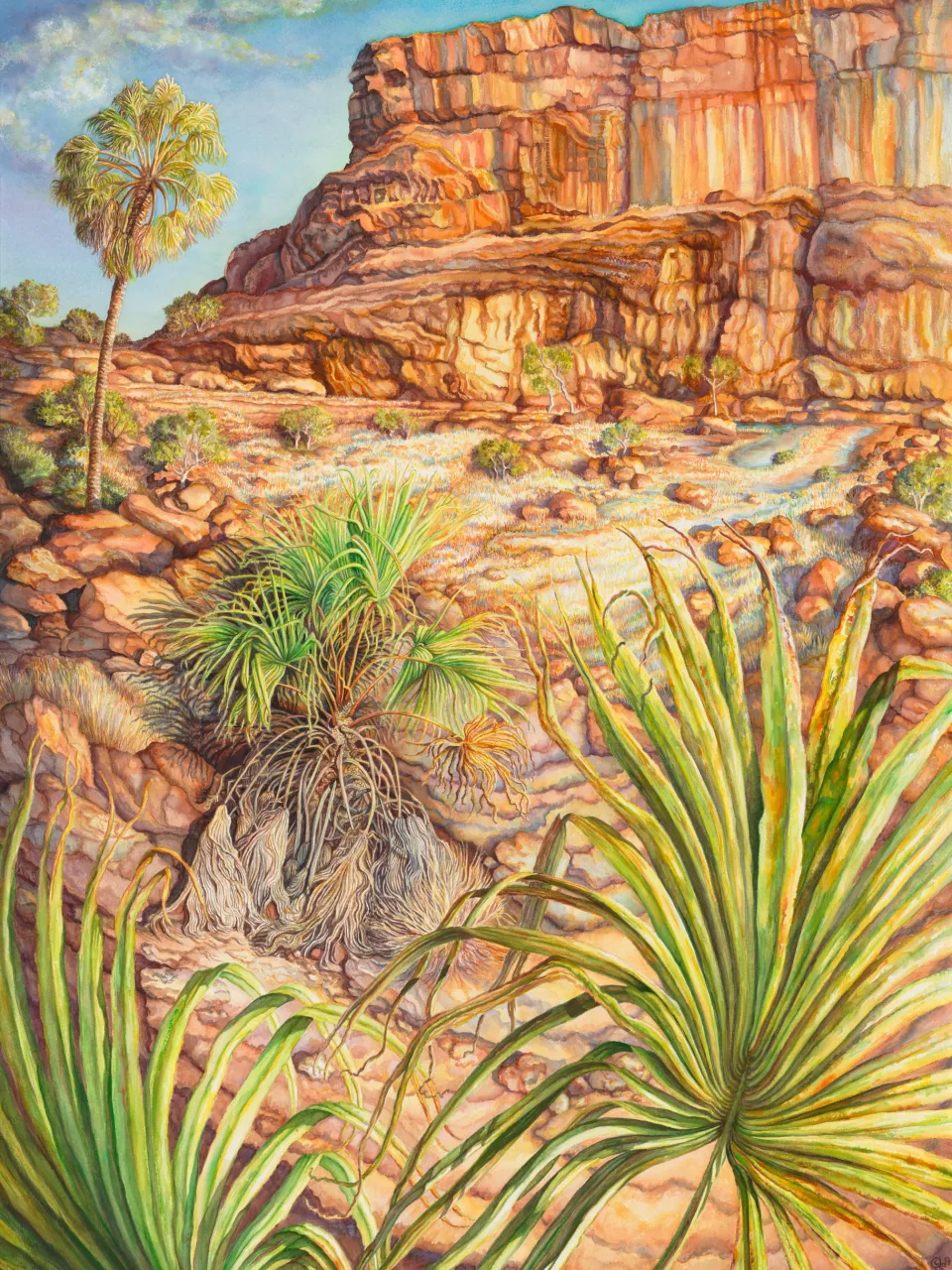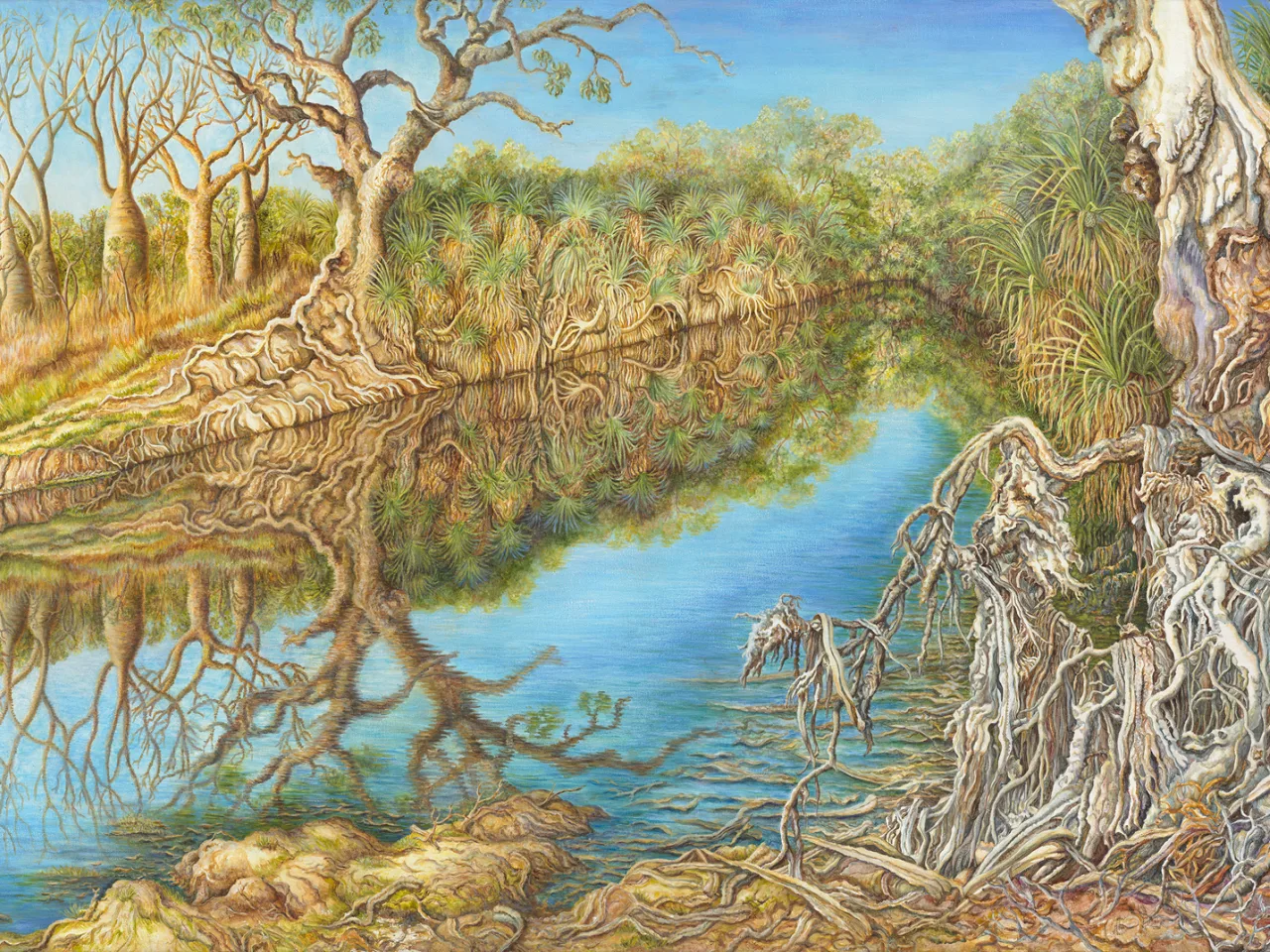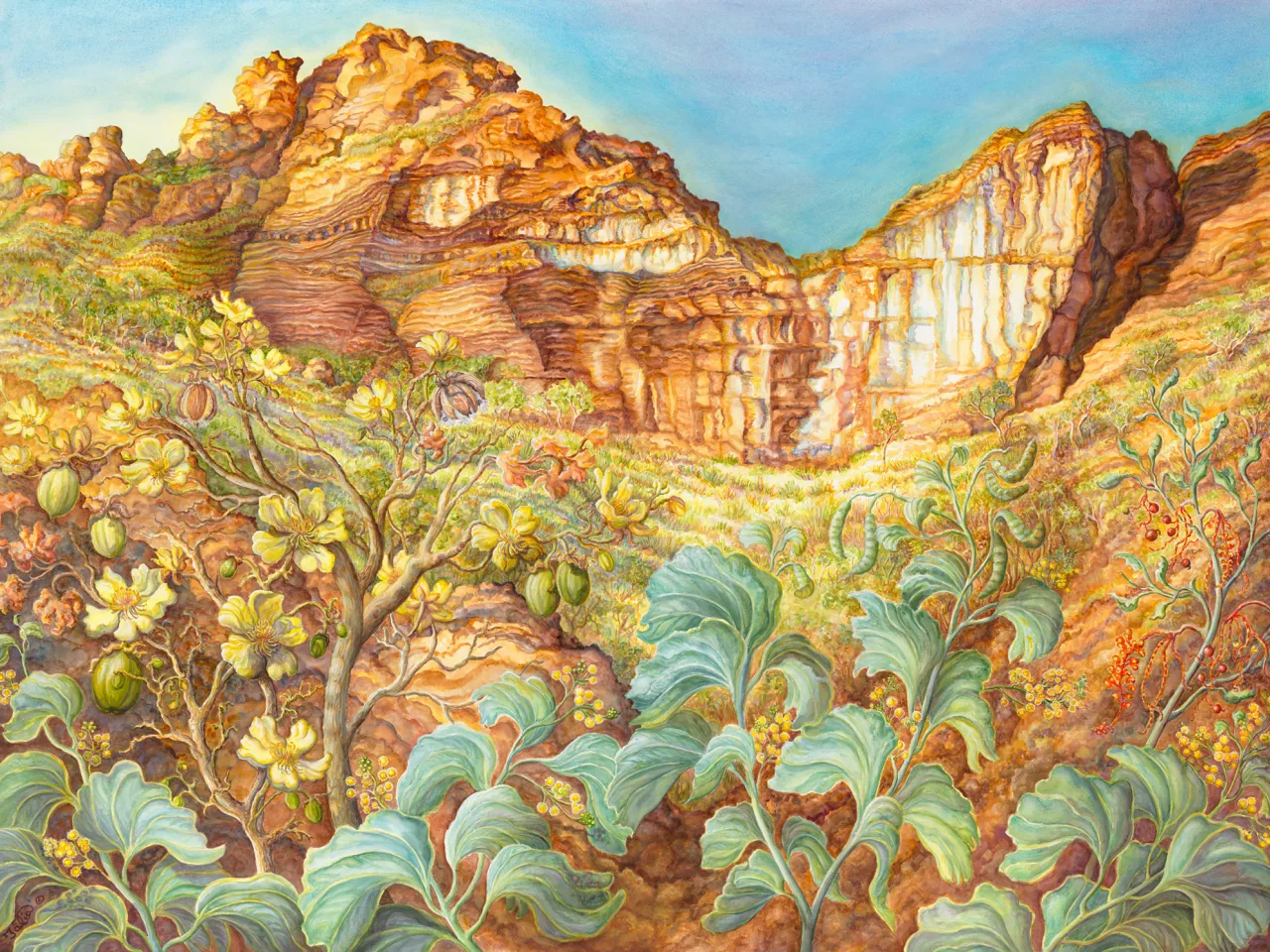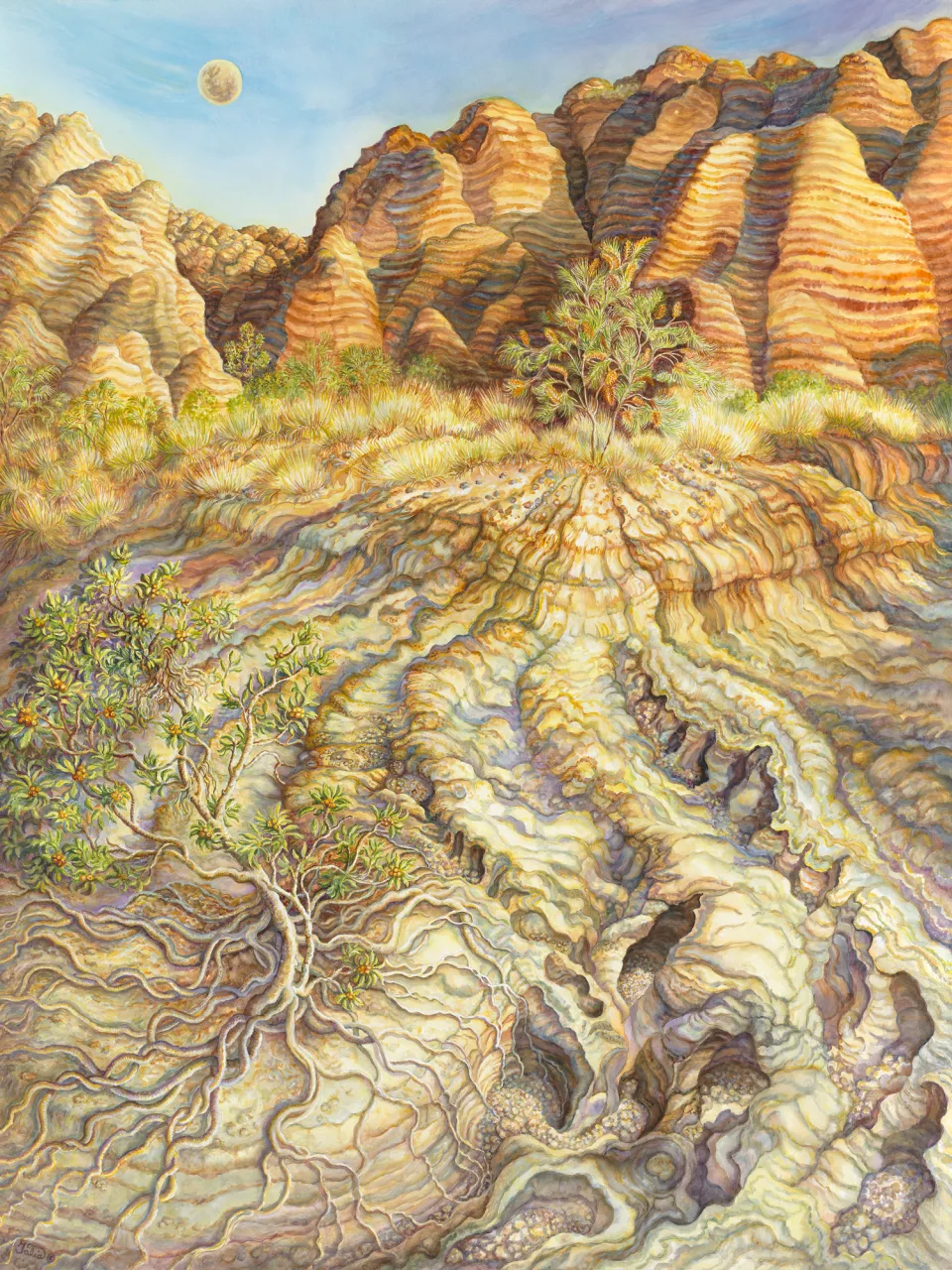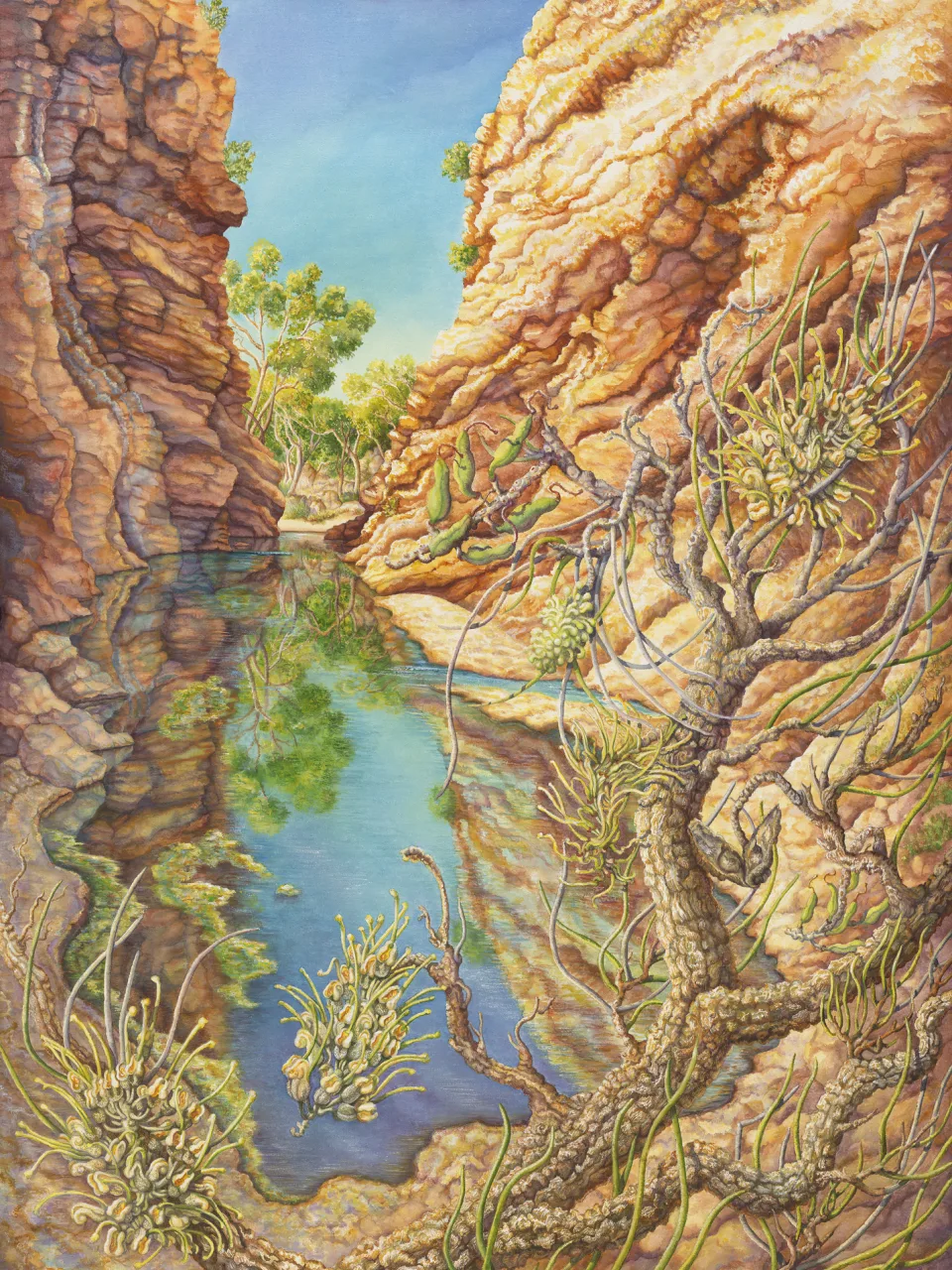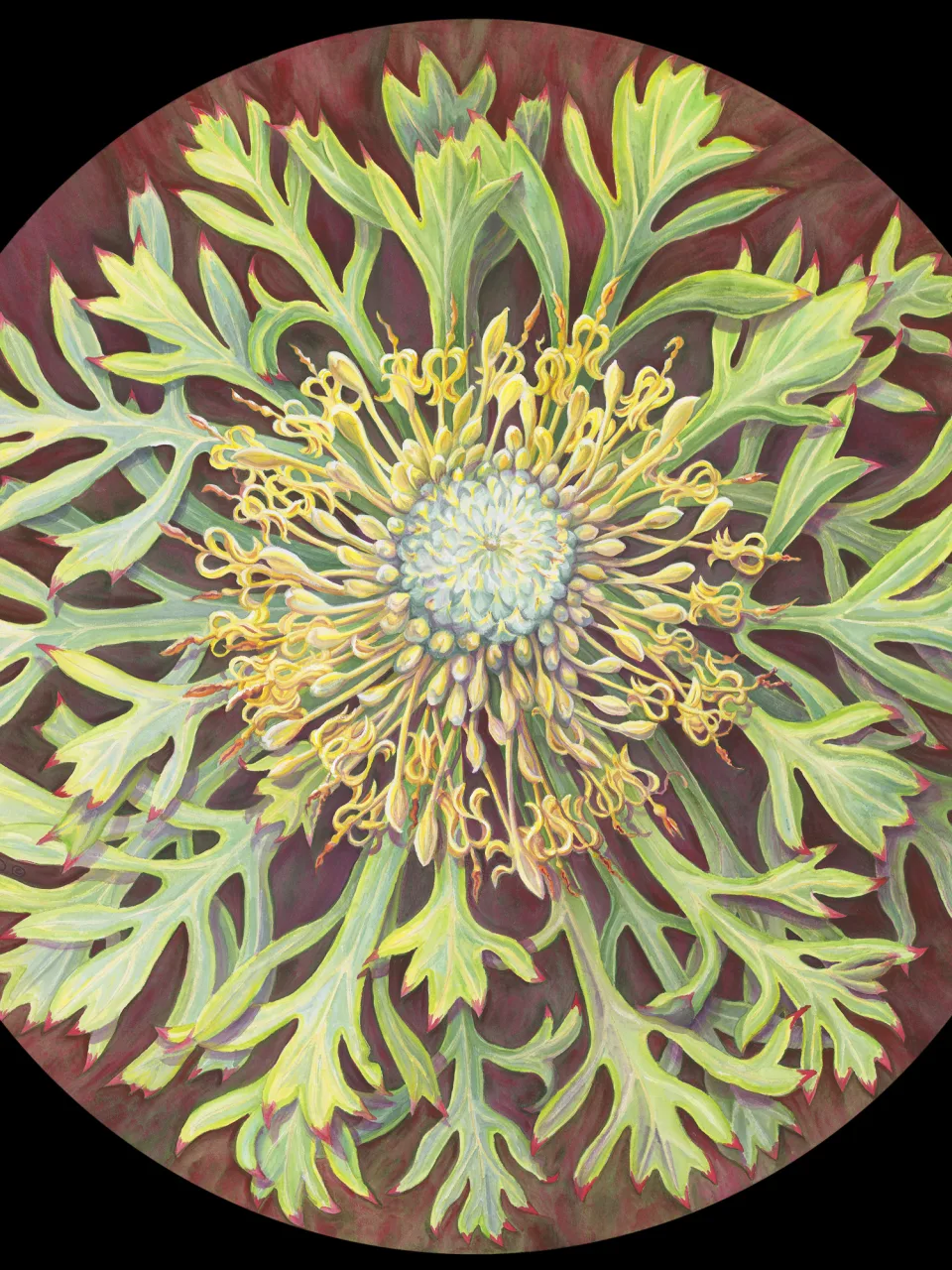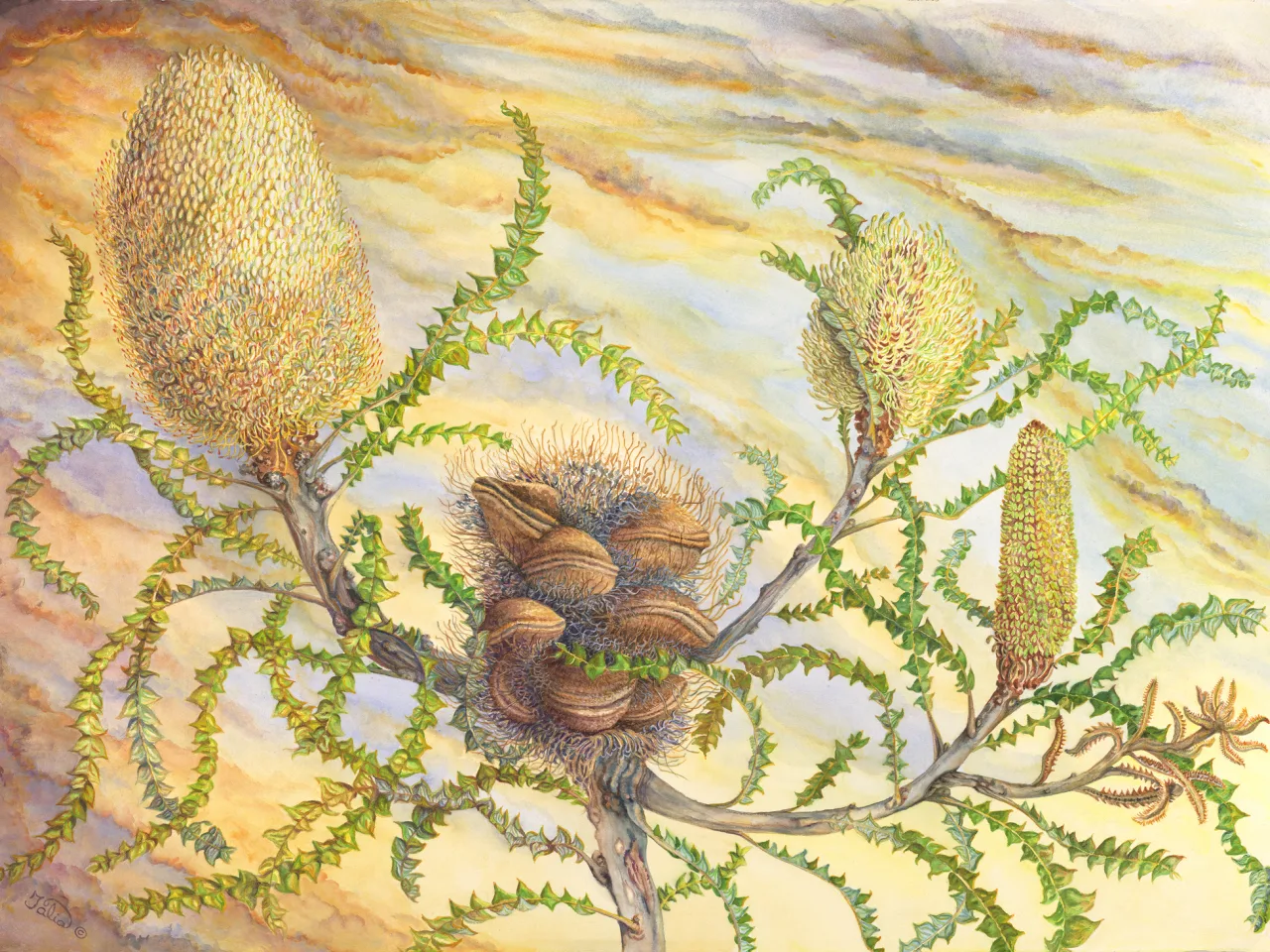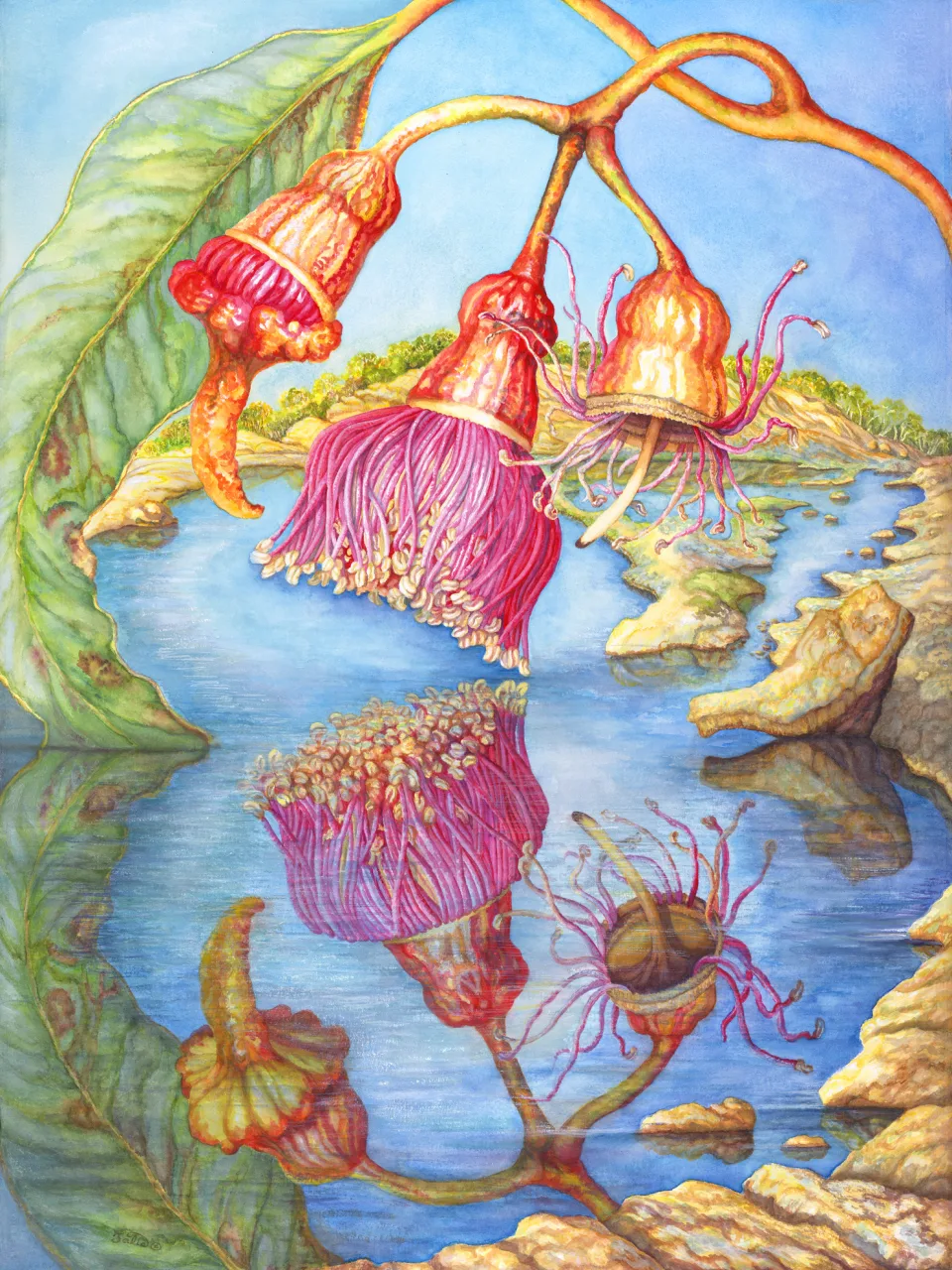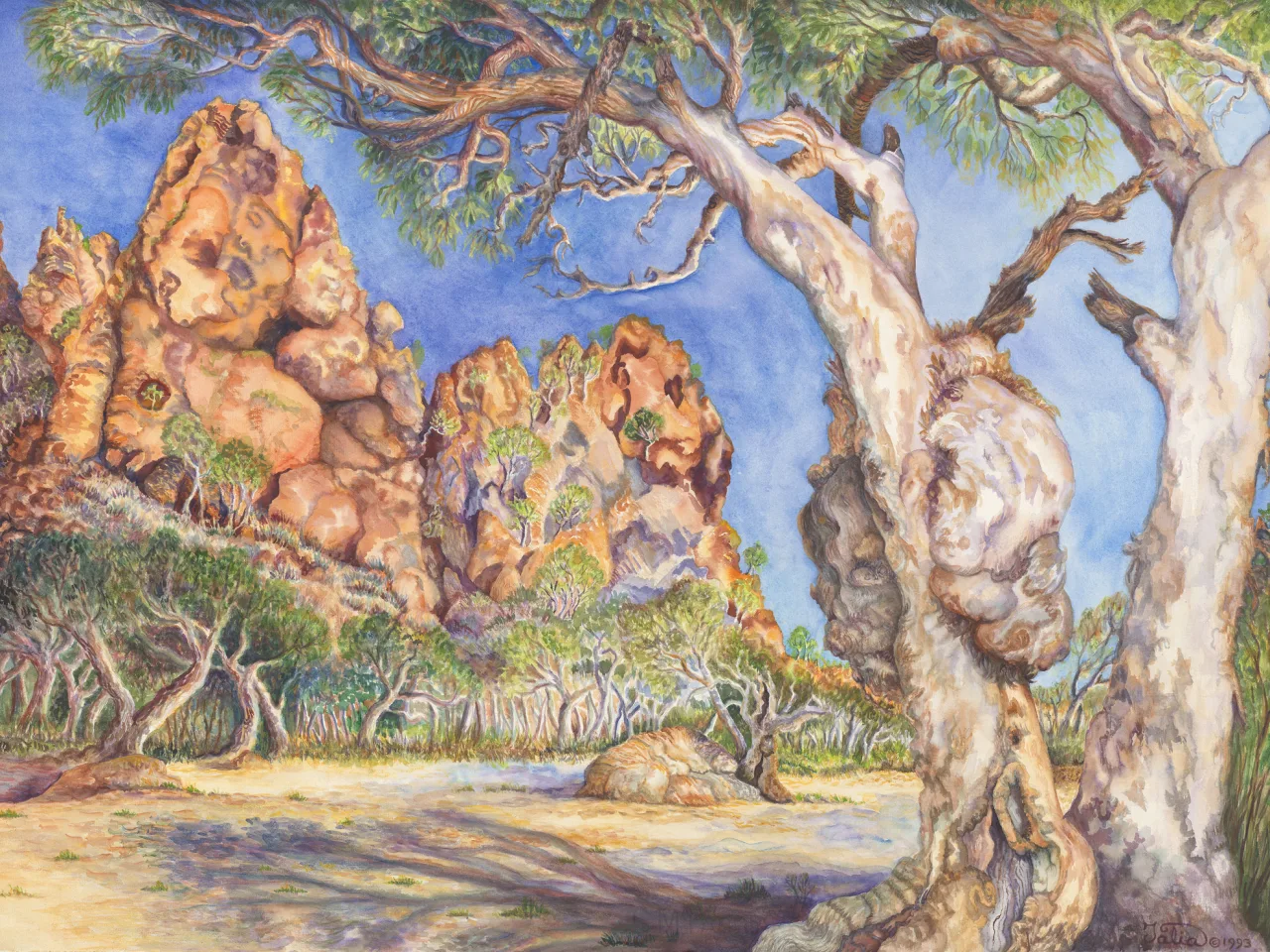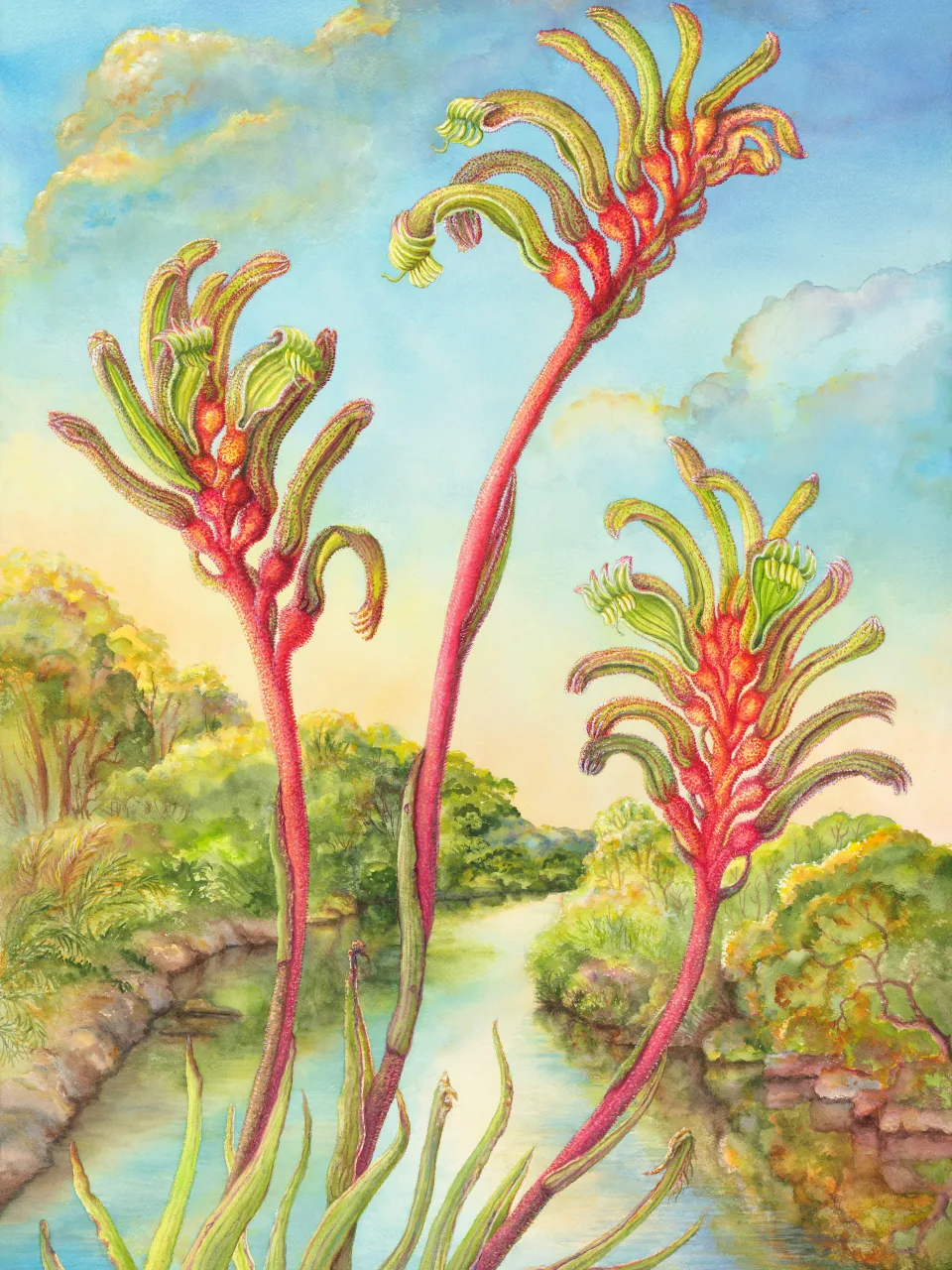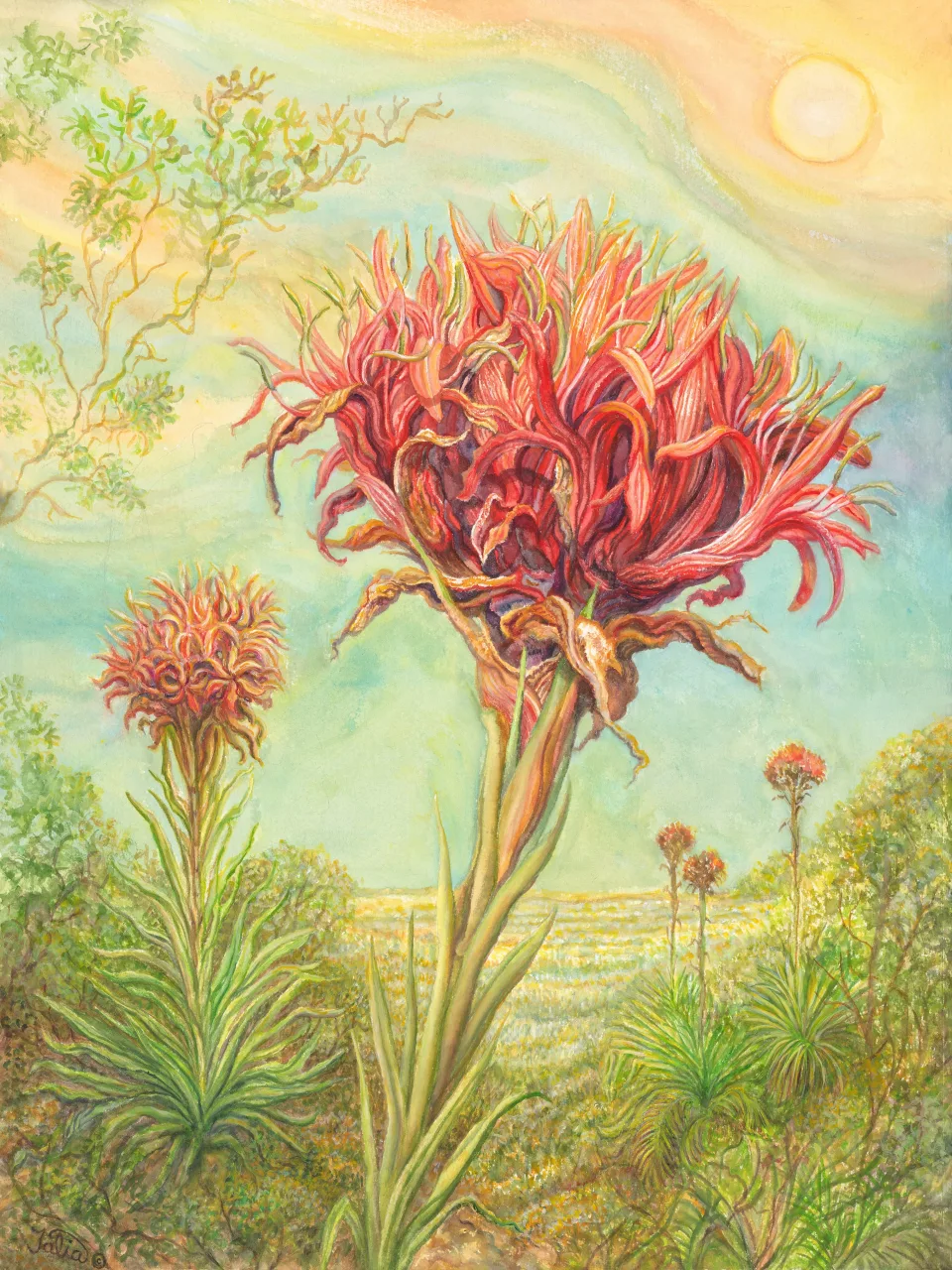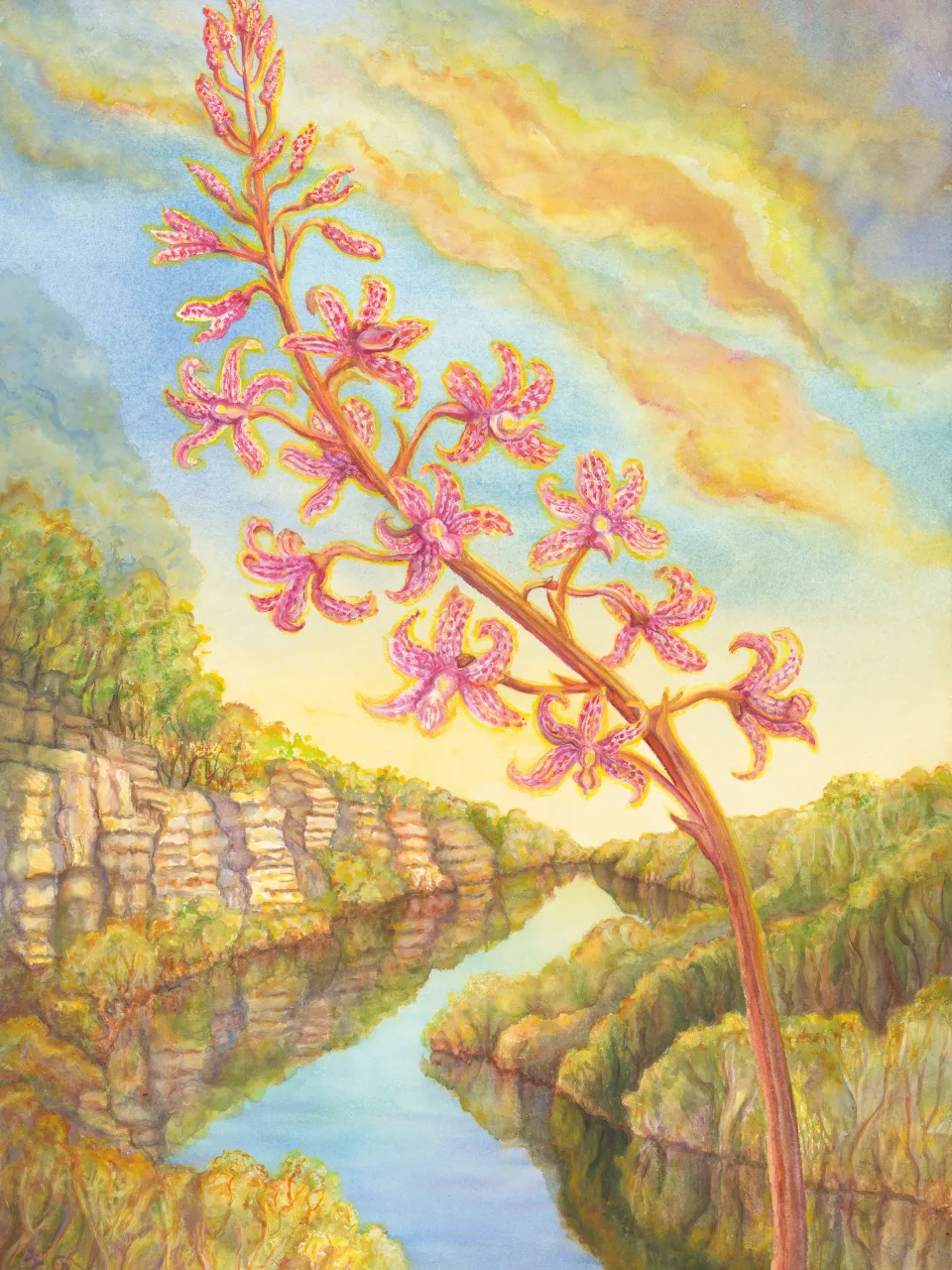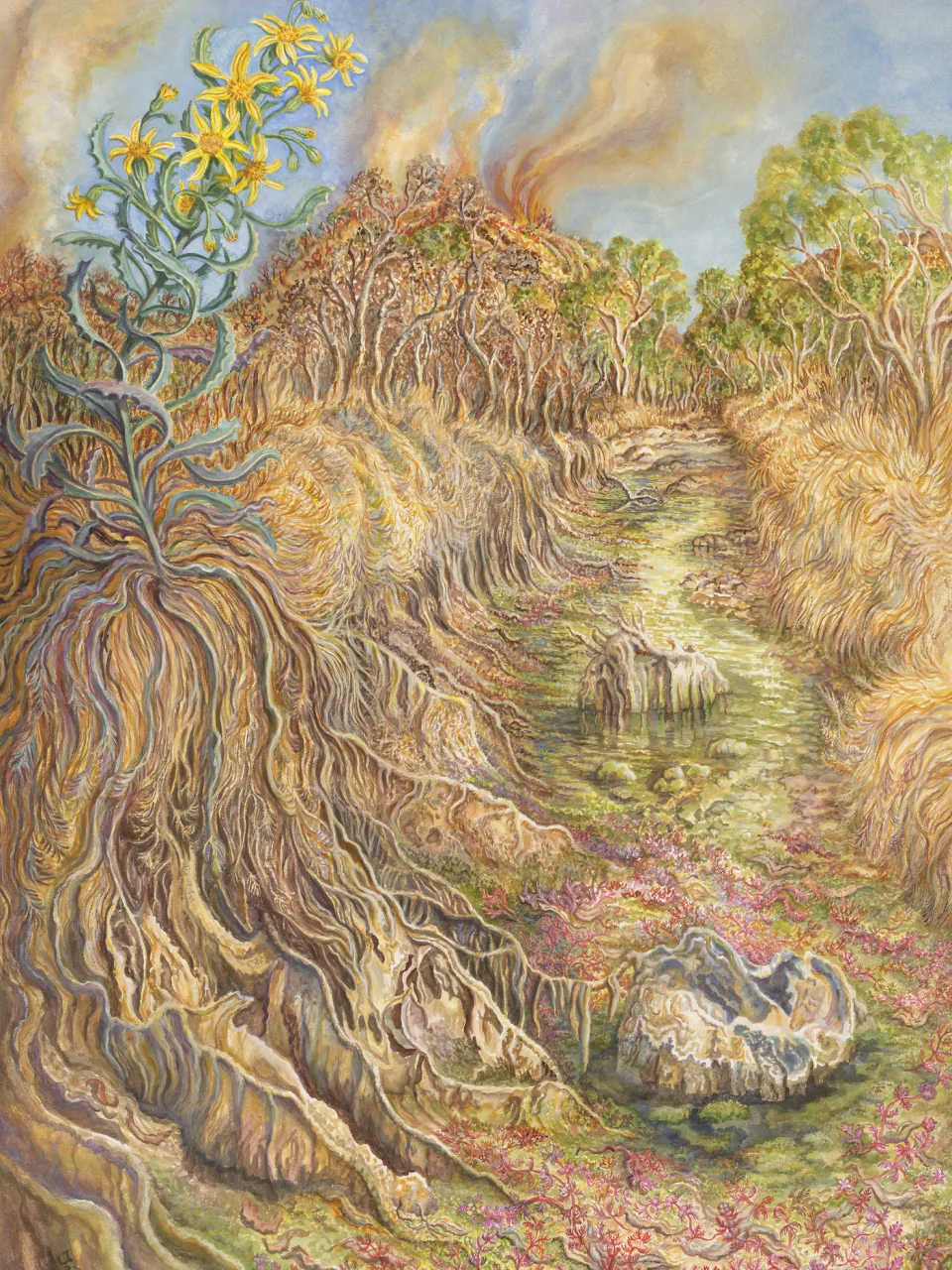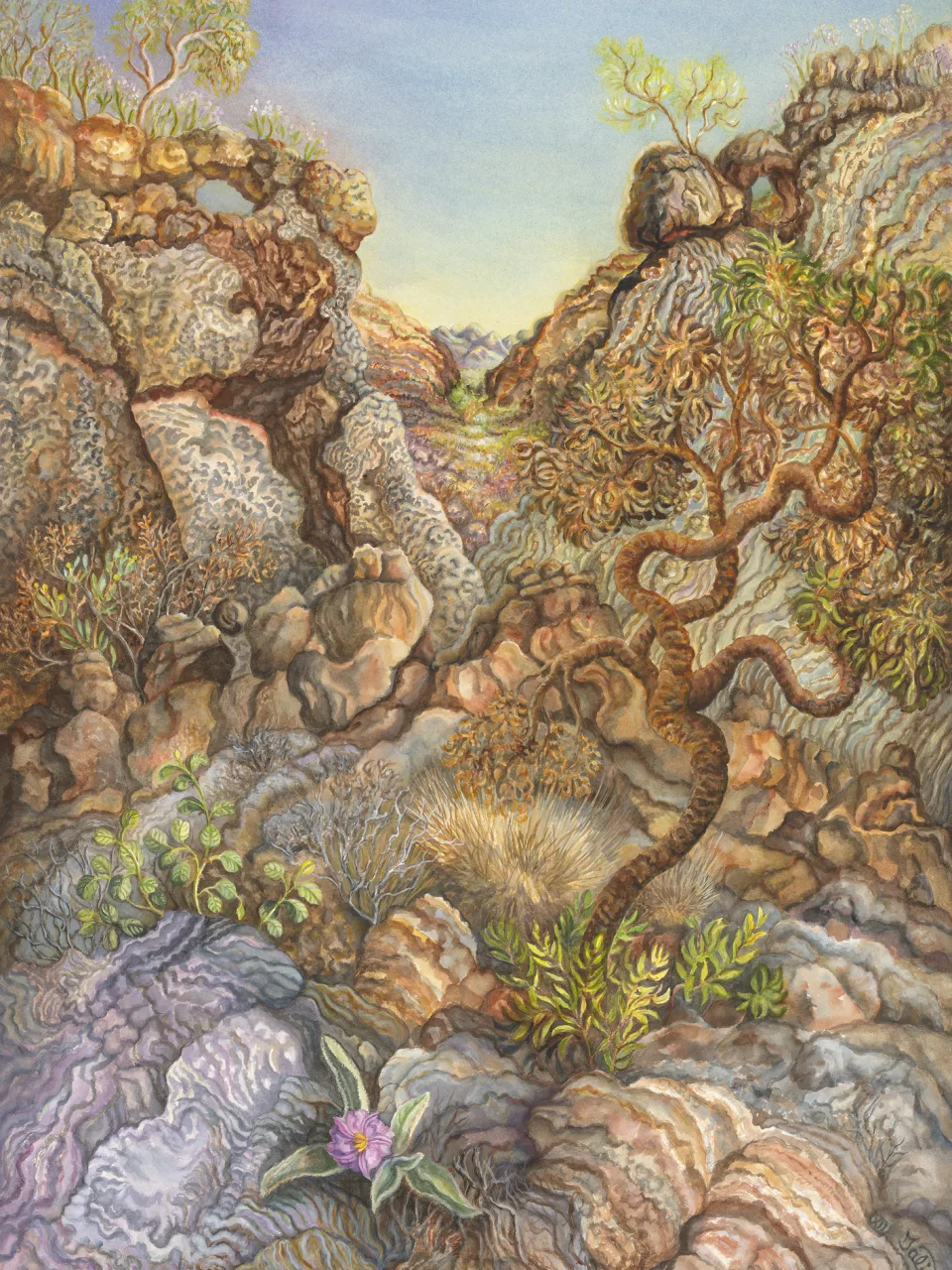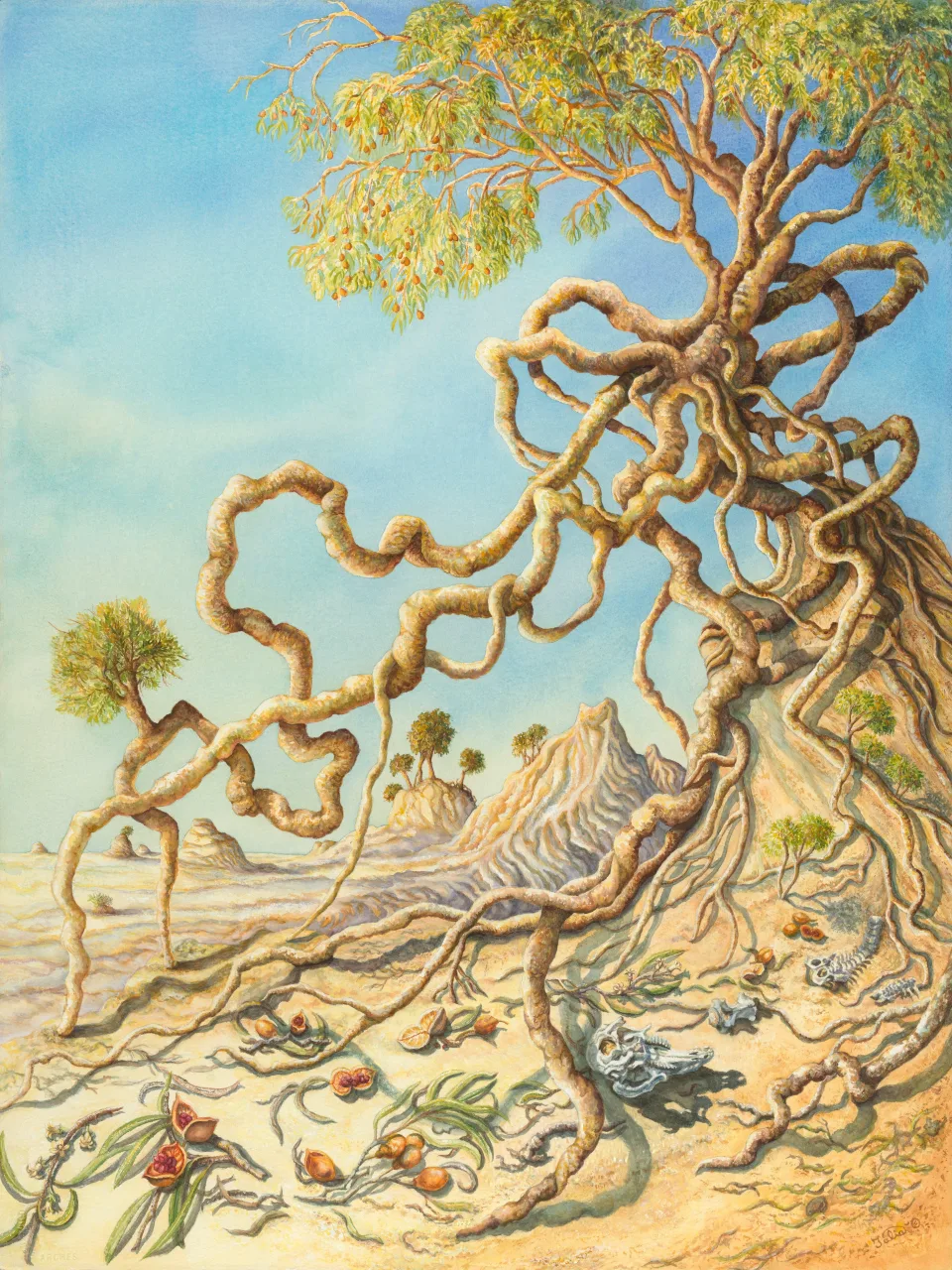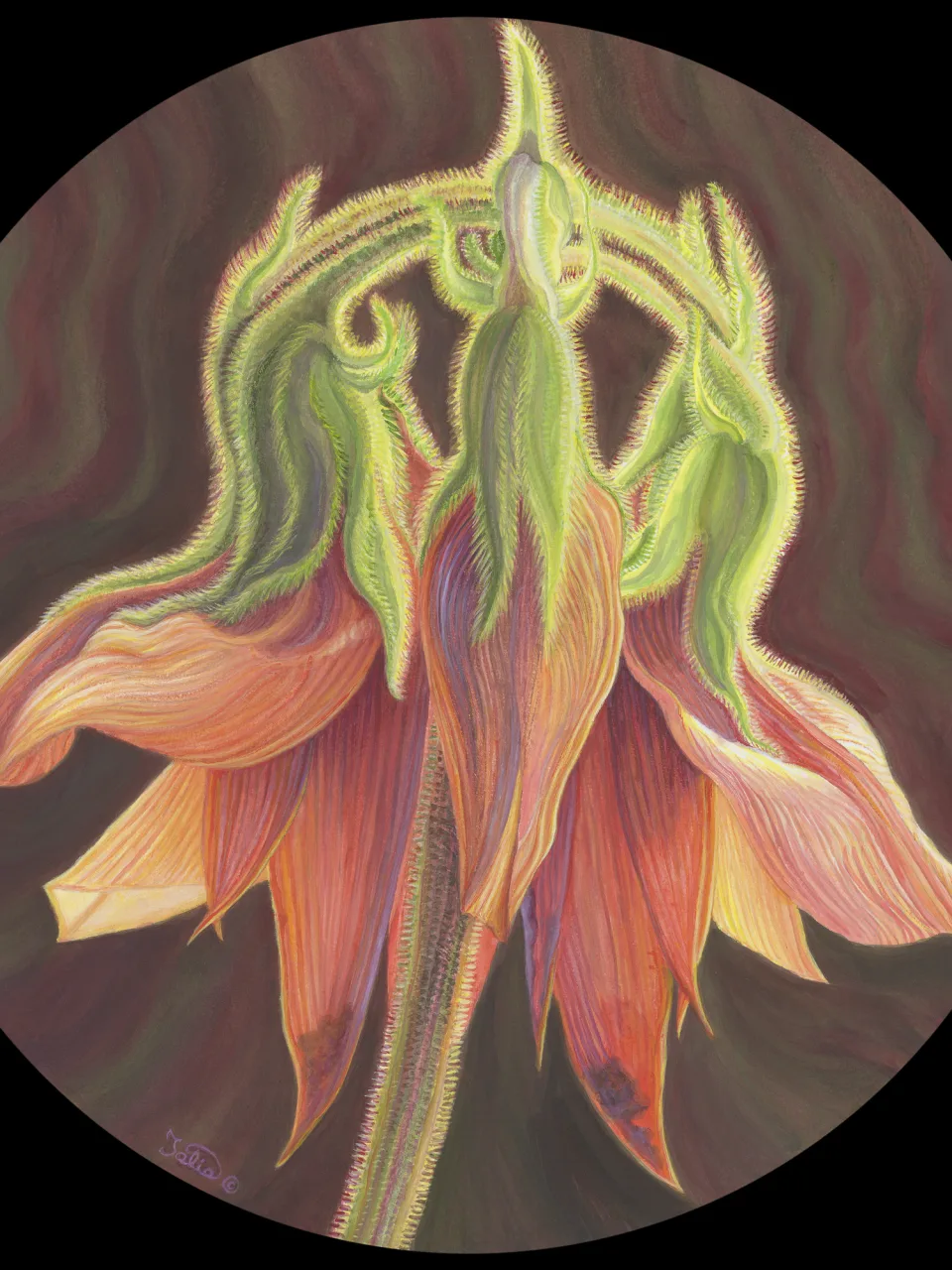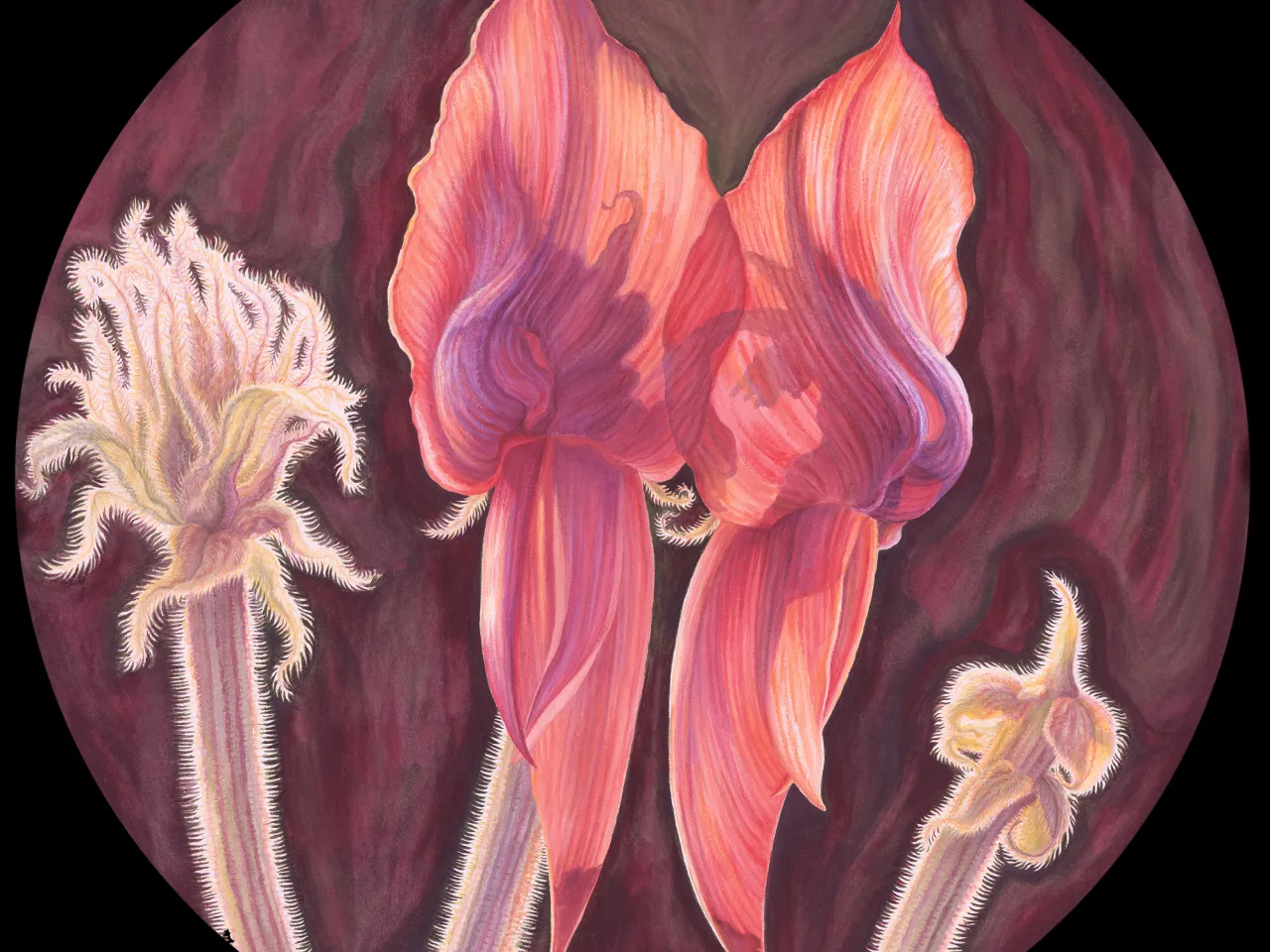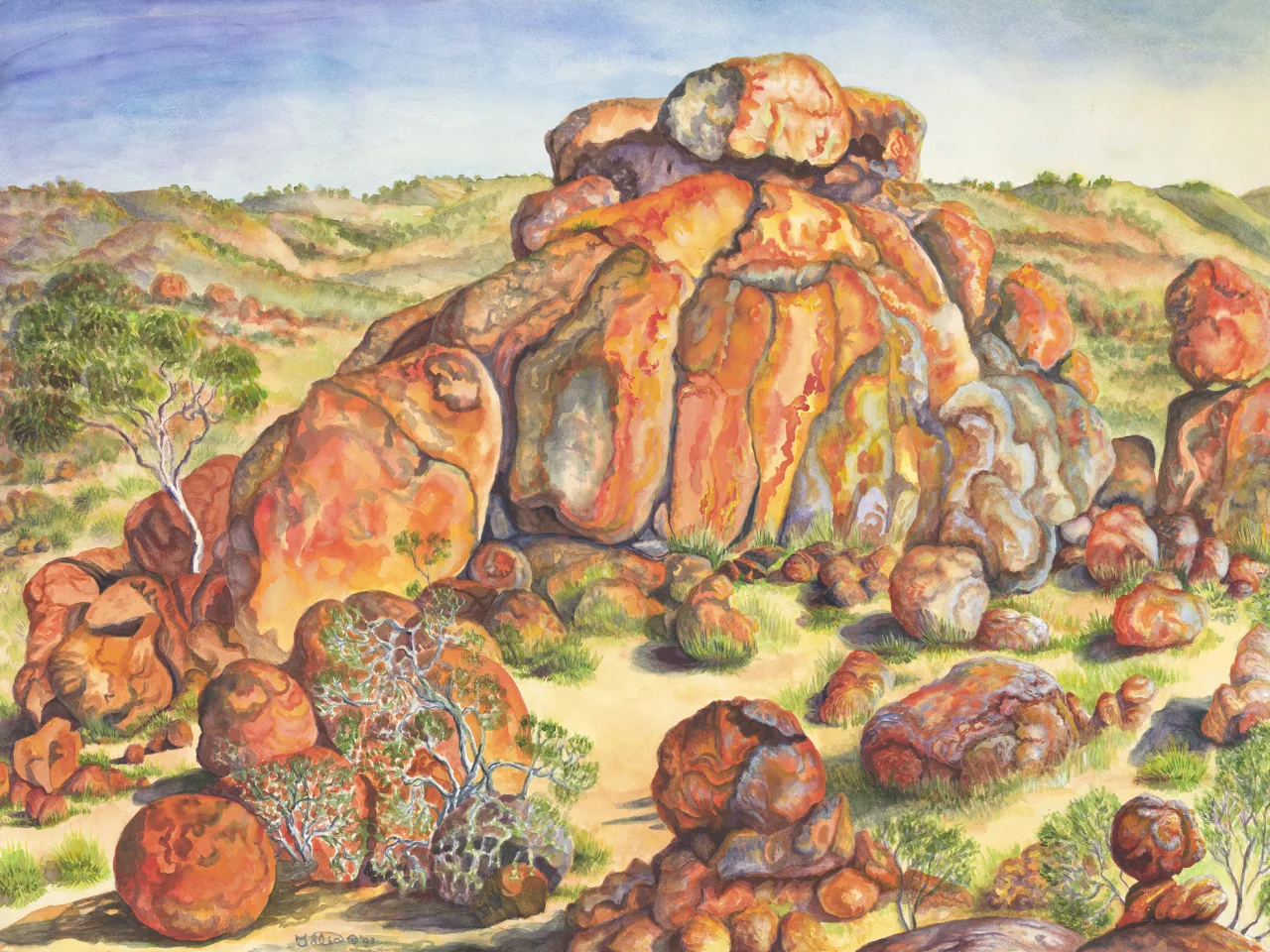Artwork 9 Helios & Selene—Male and Female Cycas armstrongii
Section 7
"Fire-Ferns" of the North—Ancient Cycads of Northern Australia
Litchfield National Park, Northern Territory, Northern Territory
- 1. Cycas armstrongii (fire-fern)
Artwork 9
Buy a print
Limited edition giclee archival quality print on 310 gsm Ilford cotton rag (from an original work in watermedia on watercolour board, 55 cm high x 74 cm wide)
from the artist
This work uses Greek mythology and an imaginative visualisation of the Sun with solar flares to suggest the warm to hot world of Jurassic Australia (200–145 mya), when cycads flourished.
The Moon is controlled in Greek mythology by the goddess Selene, daughter of the Titans Hyperion and Theia, and sister to the Sun god Helios. The study of the geology of the Moon is called selenology (Carlowicz, 2007).
The activity of the Sun has significant effects on the Earth’s climate, in ways which are not always obvious.
One of the more obvious ways involves an 11-year solar cycle, which is marked by an energetic Sun experiencing solar storms and flinging solar flares out into space. Spectacular light shows called aurora borialis or aurora australis can be admired by those near the high latitude northern or southern poles. This eleven year solar cycle results from the influence of the large outer planets (Jupiter, Saturn, Uranus, and Neptune) exercising their gravity upon the Sun, compelling it to rotate around the centre of gravity of the Solar System in an irregular fashion.
Although relatively recent events may appear to have significant effects on our climate, others occur over thousands—and millions—of years, as continents move around and ice ages come and go. One of the most important, confirmed by various researchers, is the 100,000 year cycle that the Earth undergoes as it orbits around the Sun in an elliptical pattern (Macdougall, 2004/2006).
While Helios & Selene celebrates the life-giving Sun, it also recognises the Moon, whose gravity stabilizes the Earth and thus gives us seasons which do not fluctuate wildly, as they would if the Moon moved away. We are fortunate to live at a time when the Moon is not so close to the Earth that it can cause enormous tides—or so far away that the Earth would tilt erratically and produce wild climate extremes. It is very slowly moving away from the Earth (about 3.8 cm per year) but in its current position we can not only appreciate its stabilizing influence, but also its beauty, and the fact that it appears to be the same size as the Sun, so that we can have spectacular solar eclipses (Plimer, 2009; Stewart & Lynch, 2007)!
